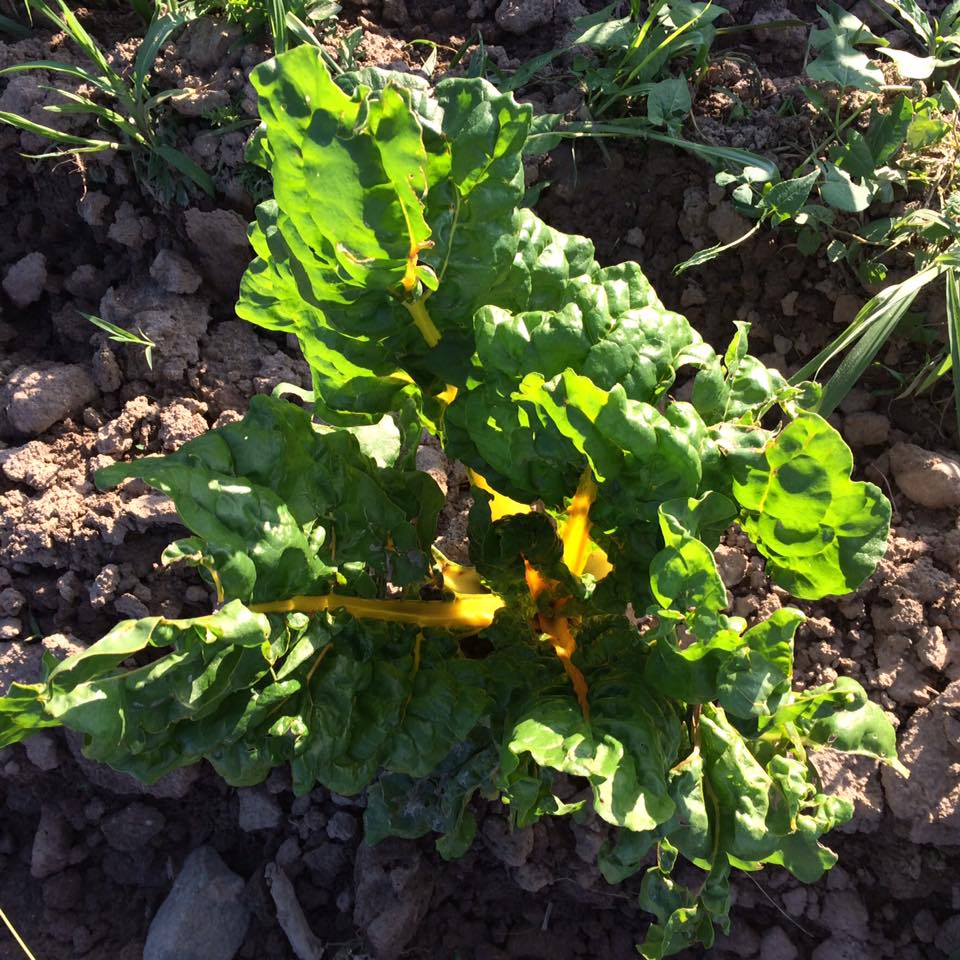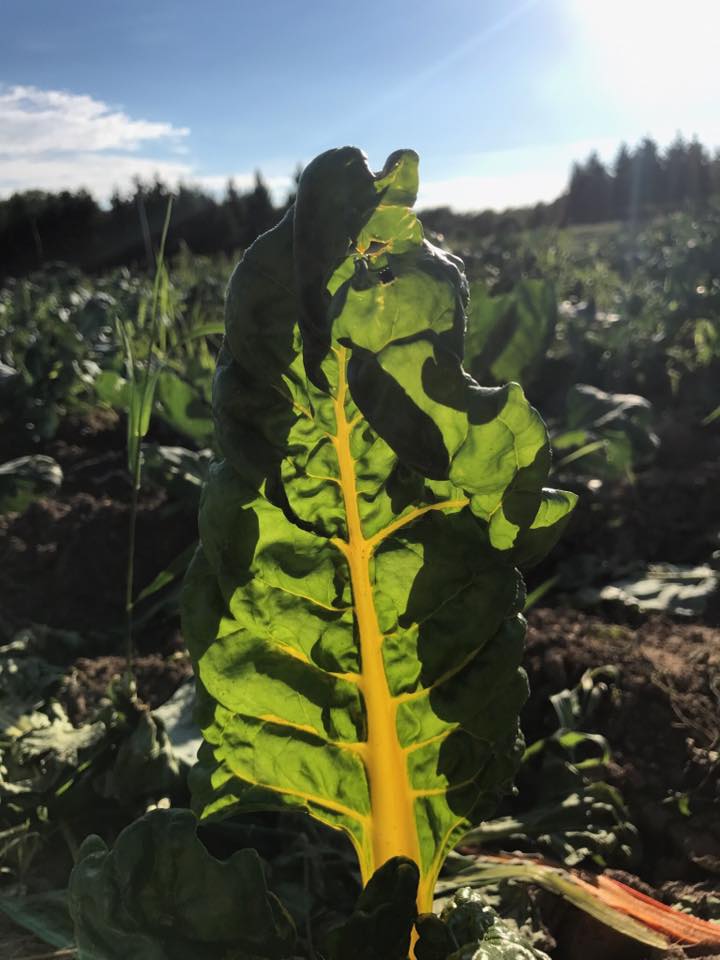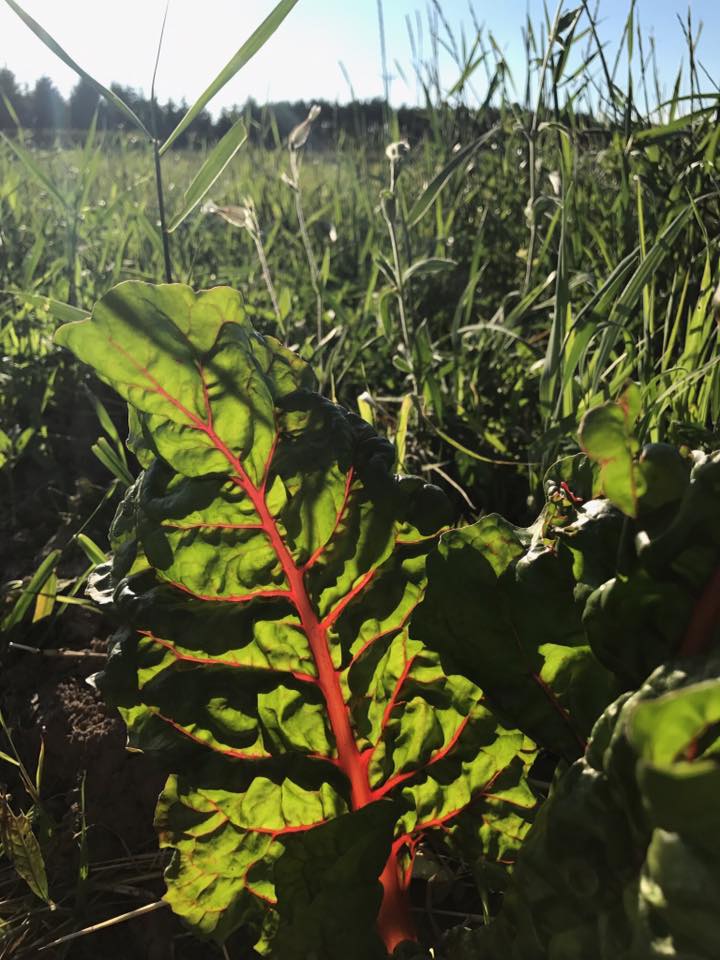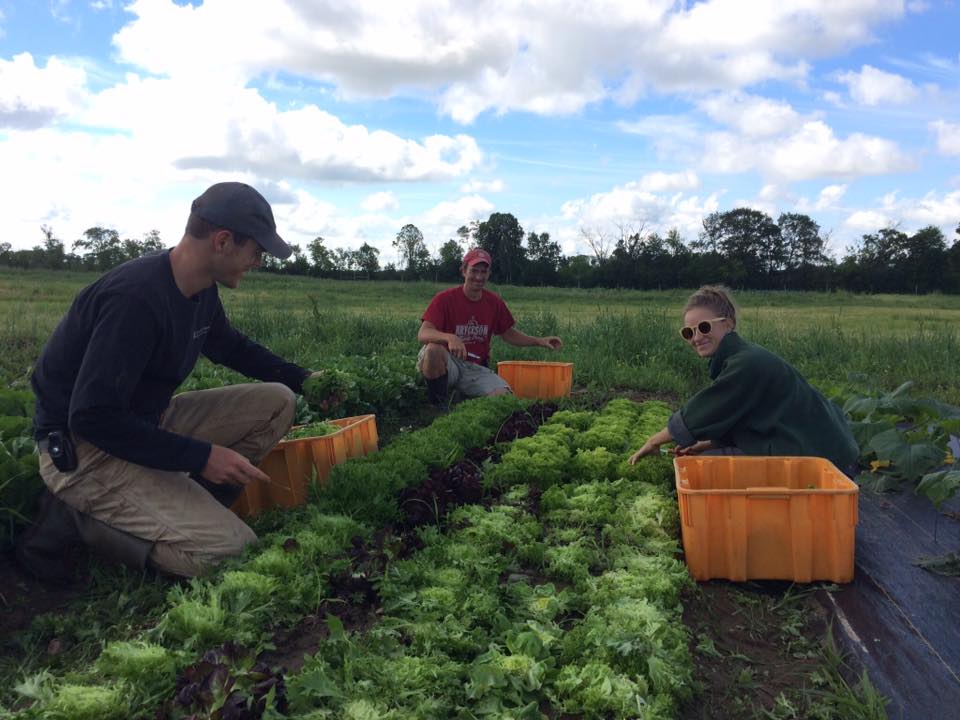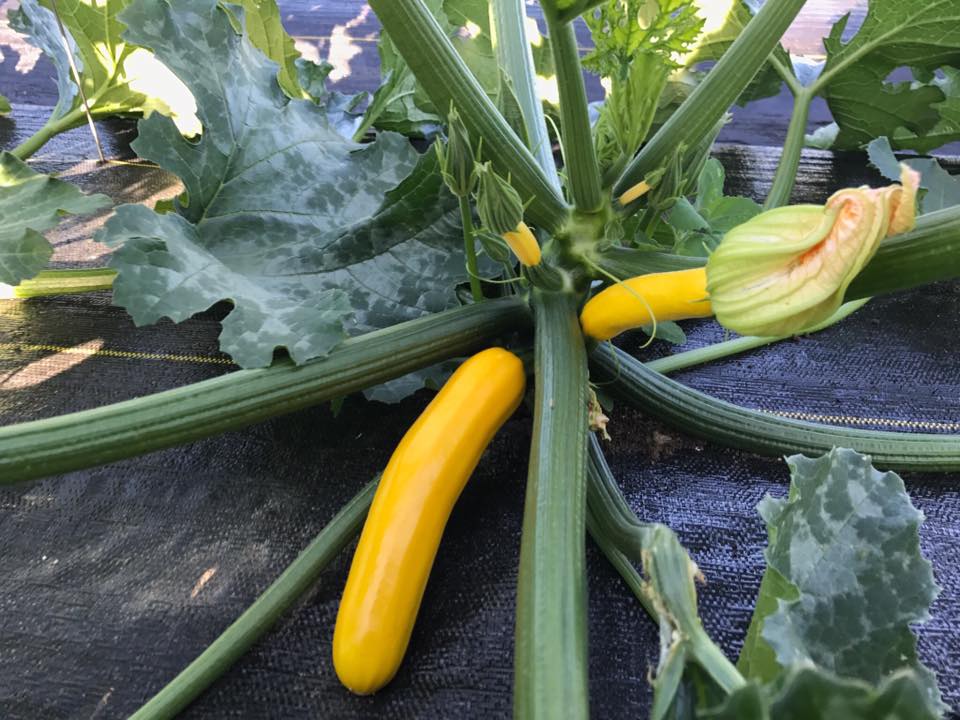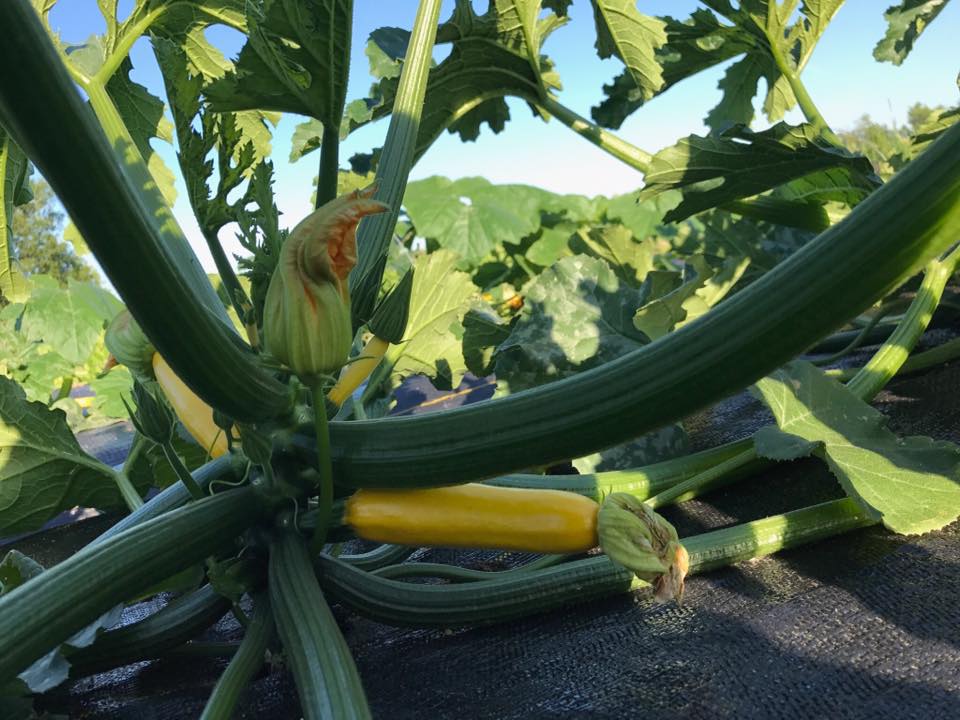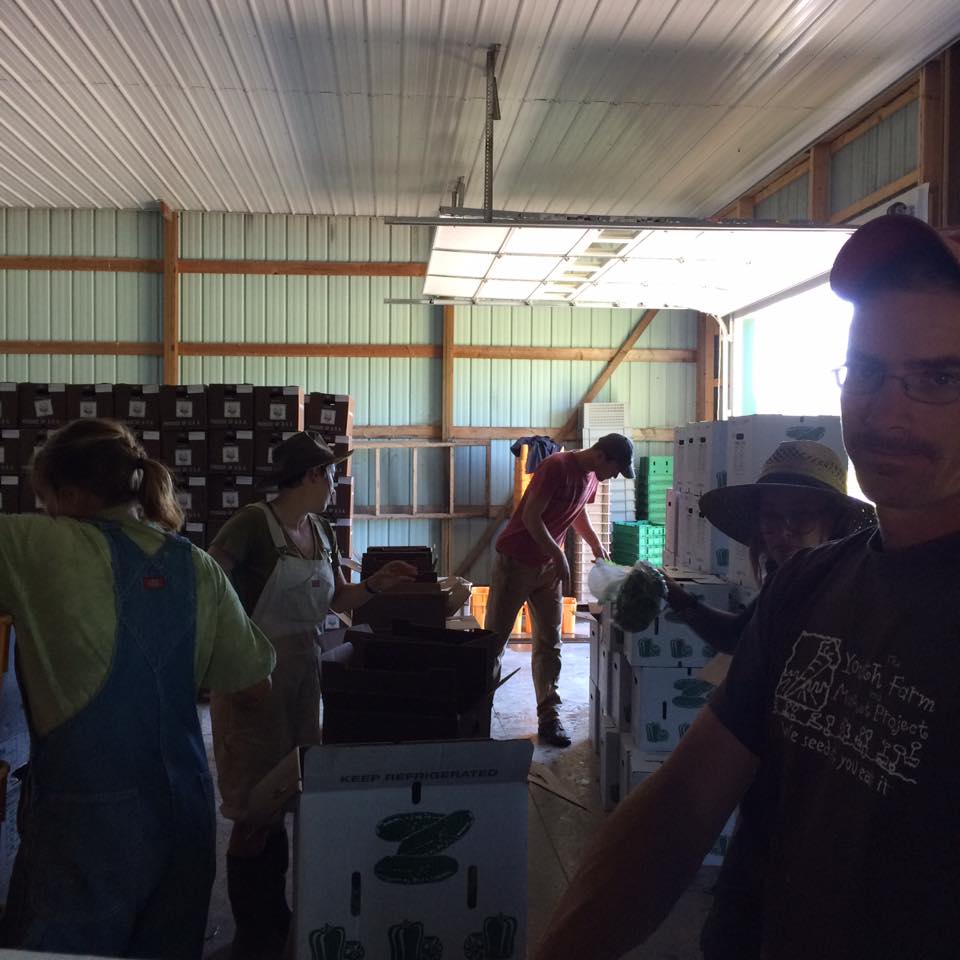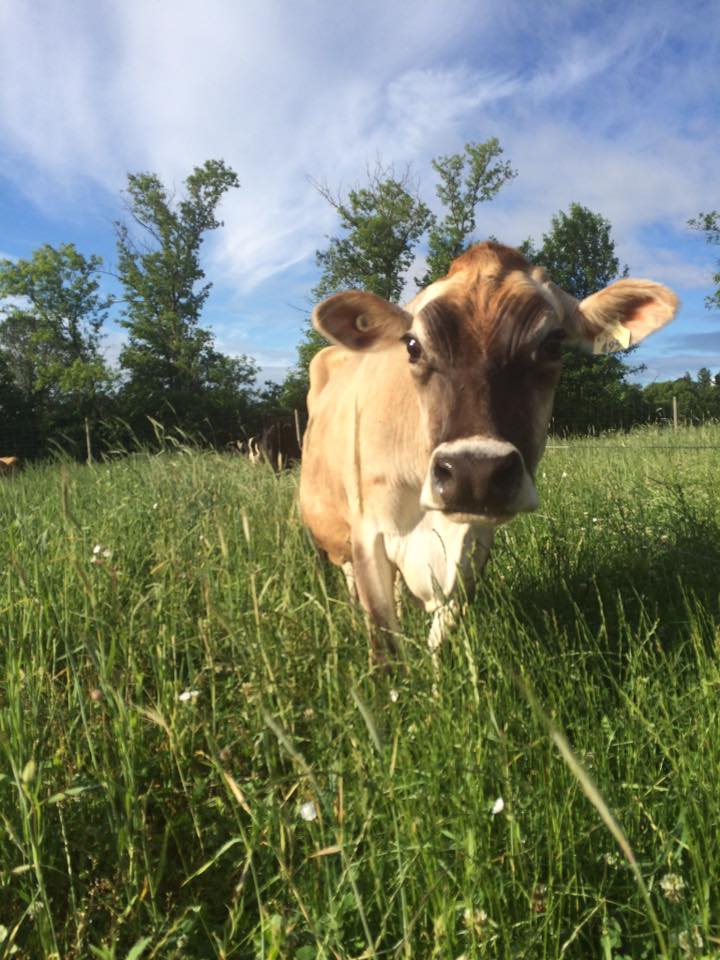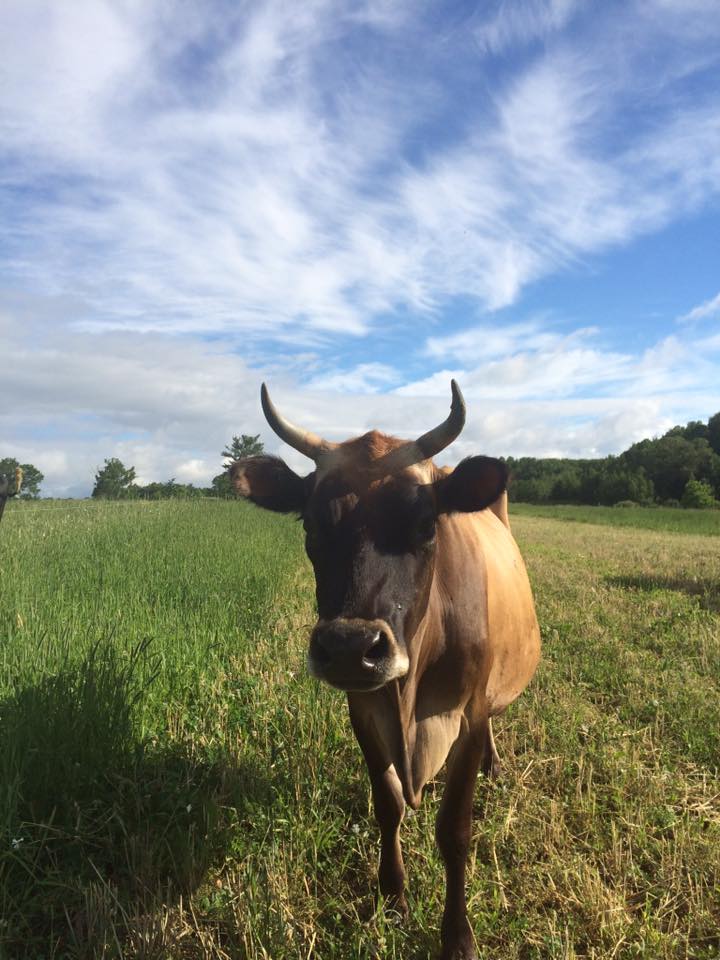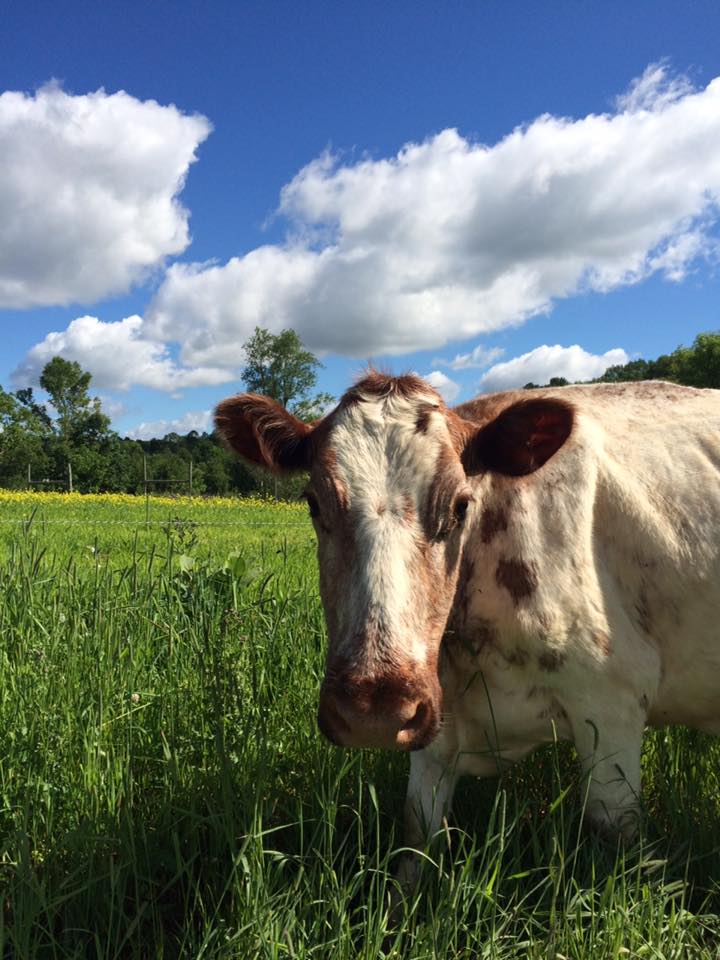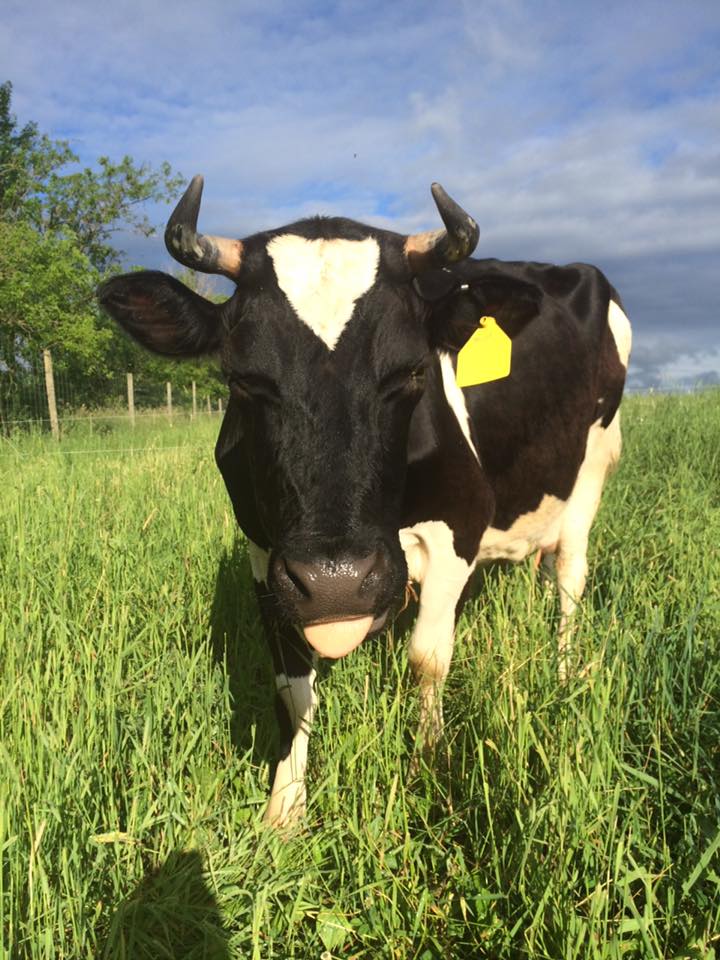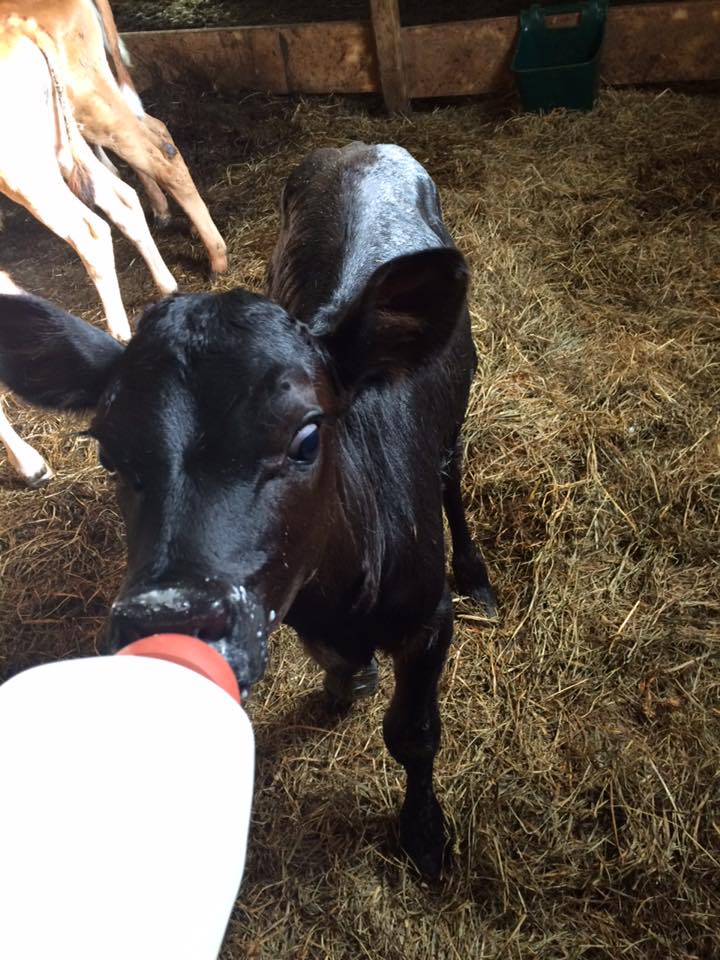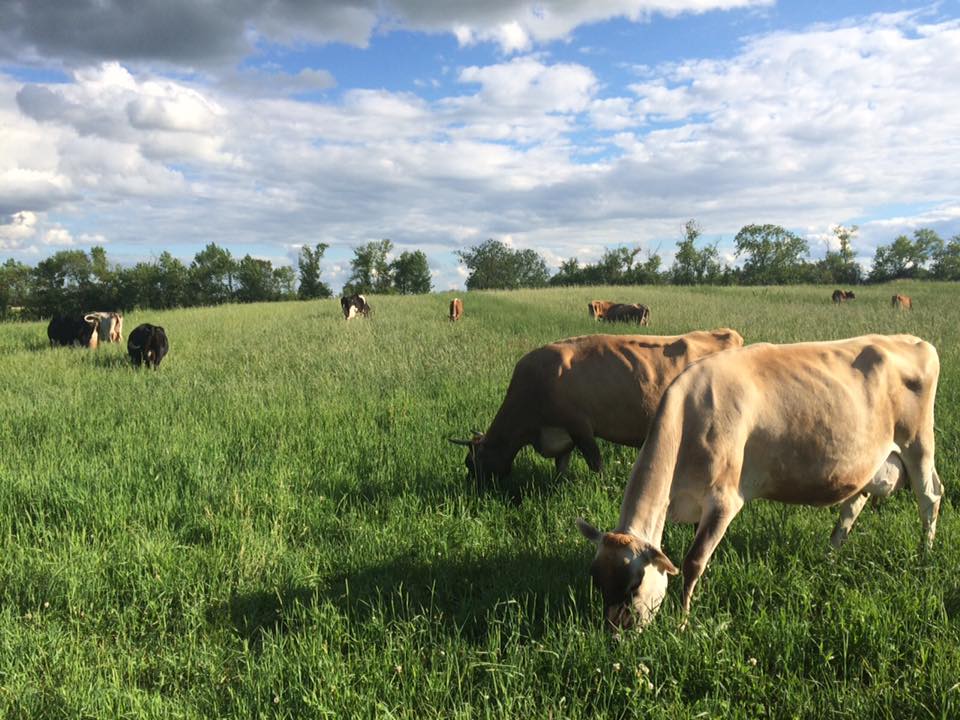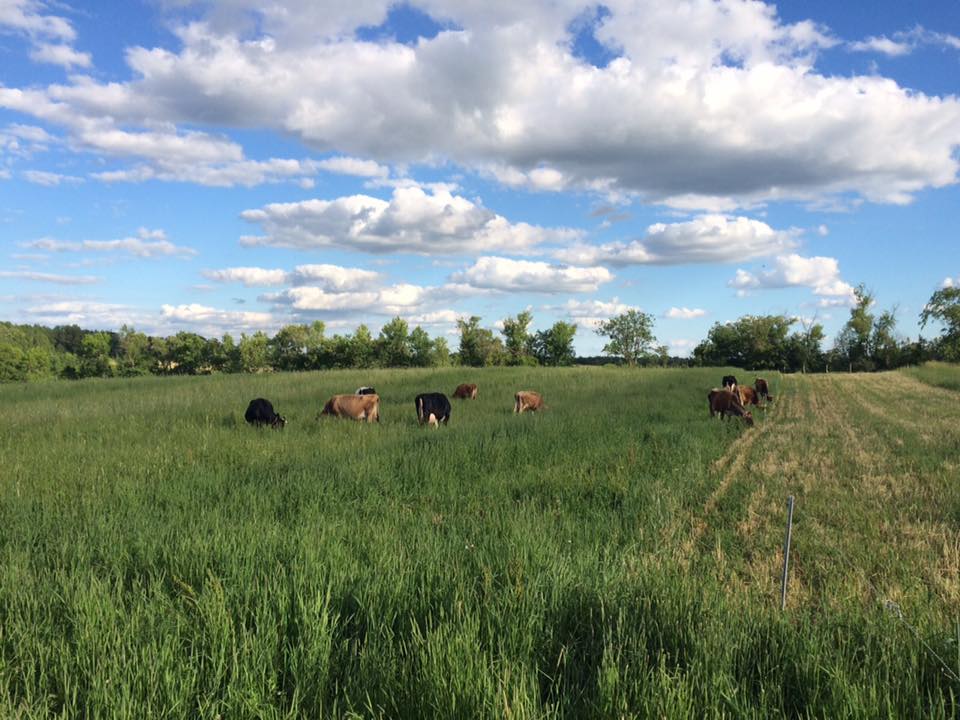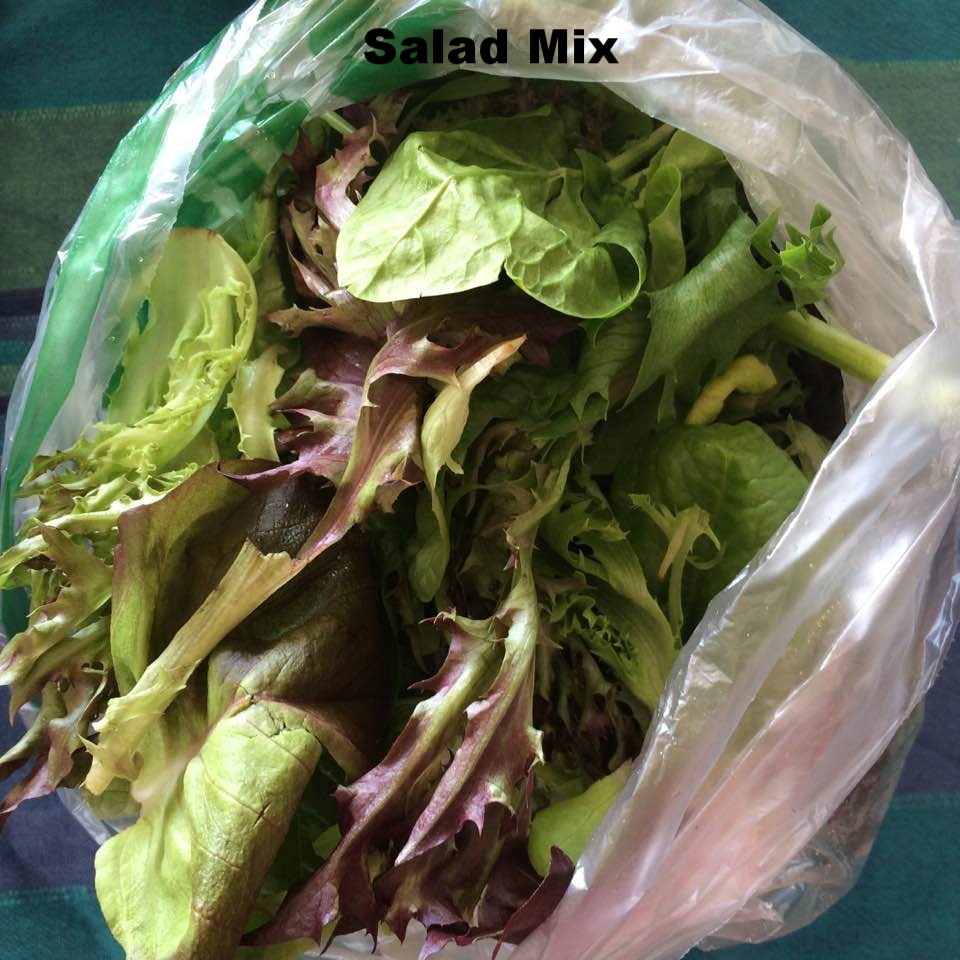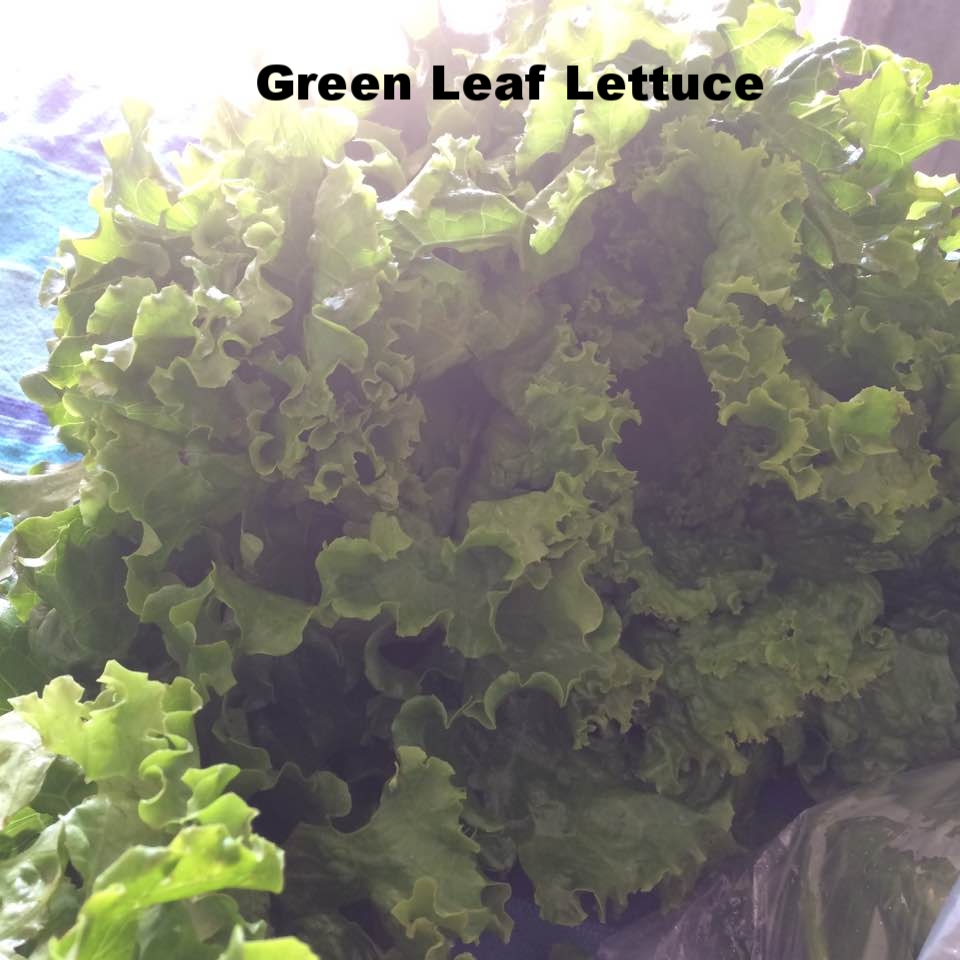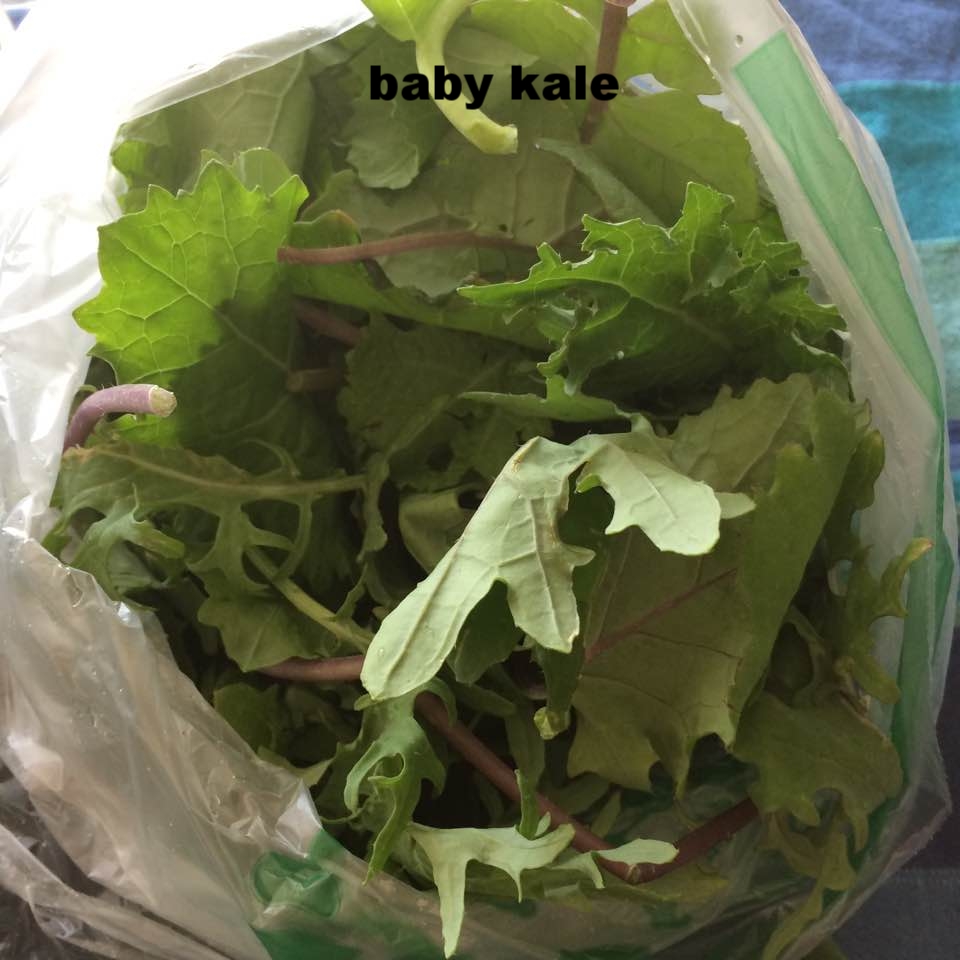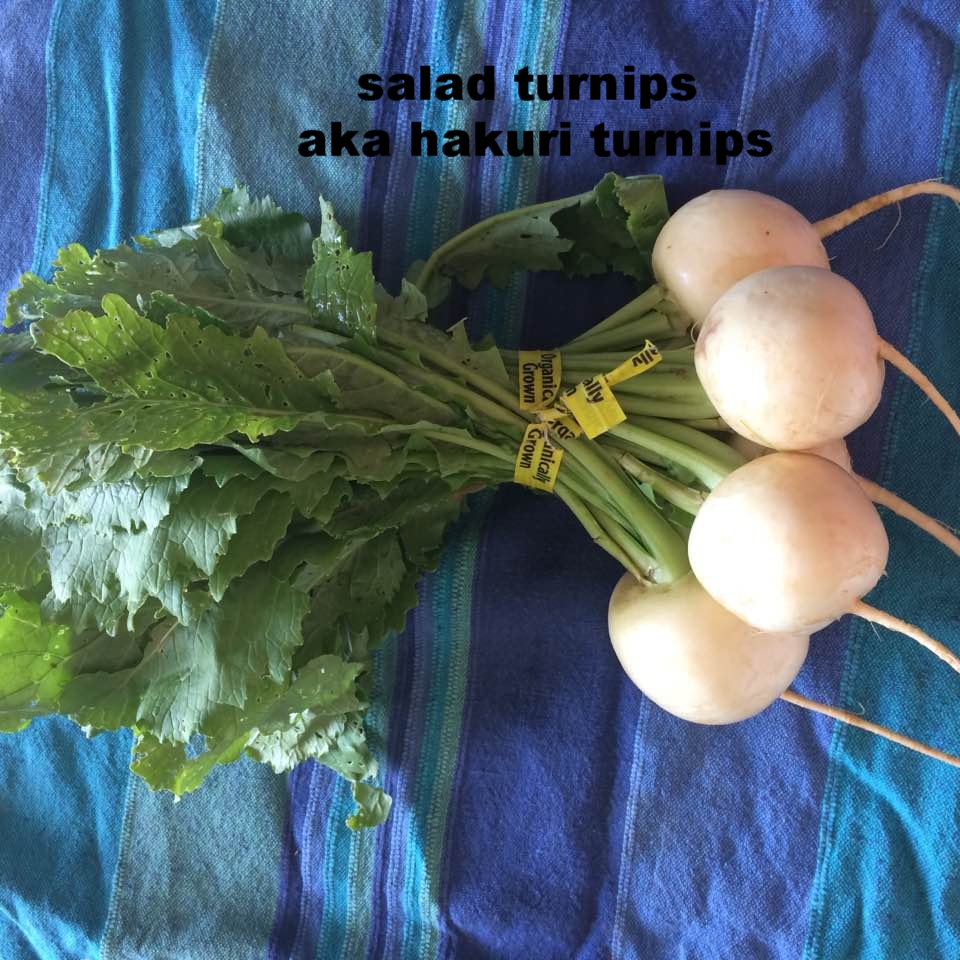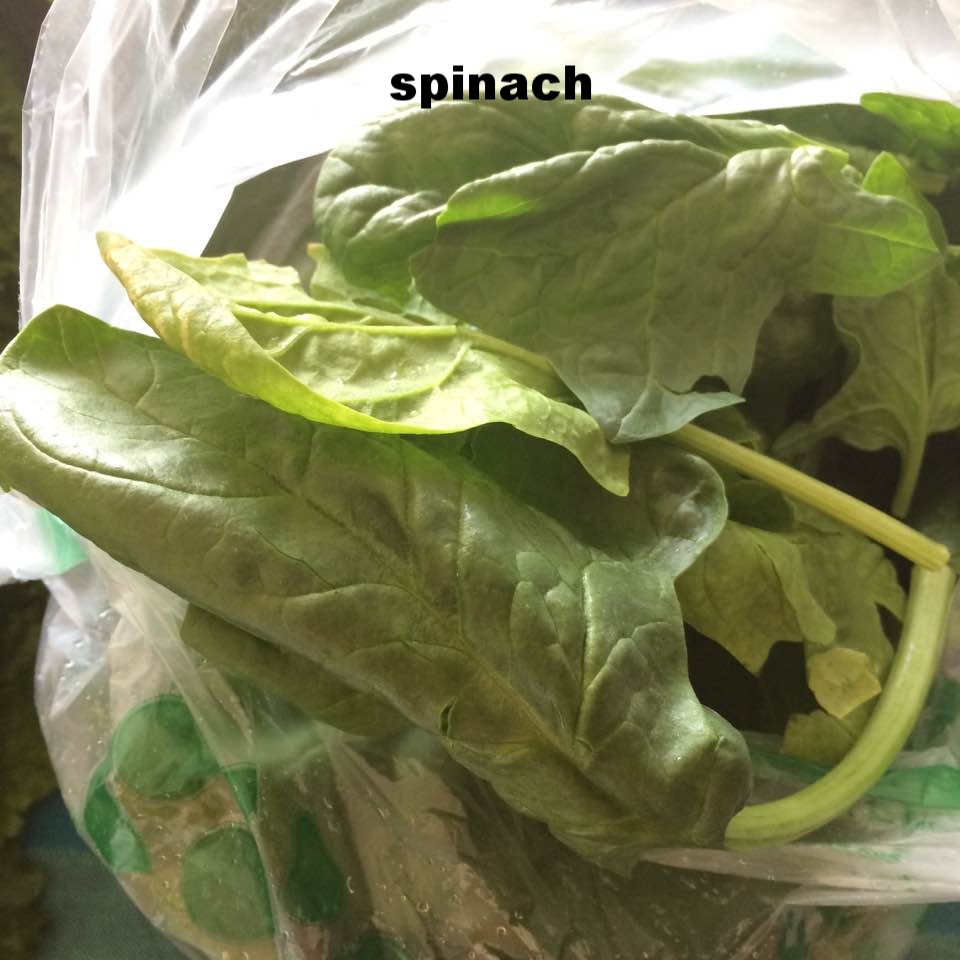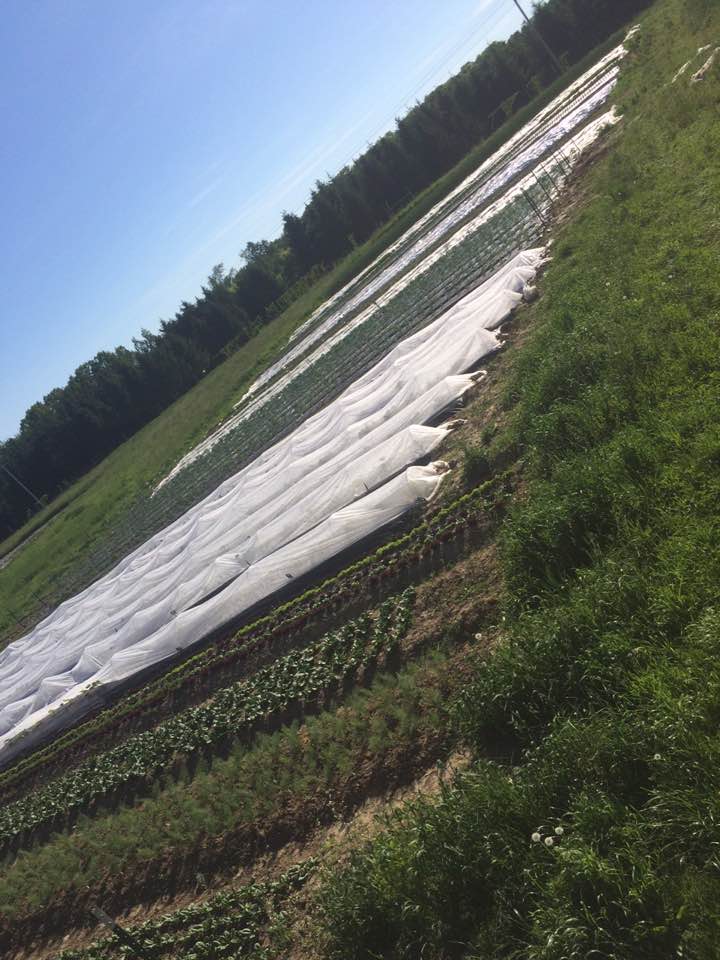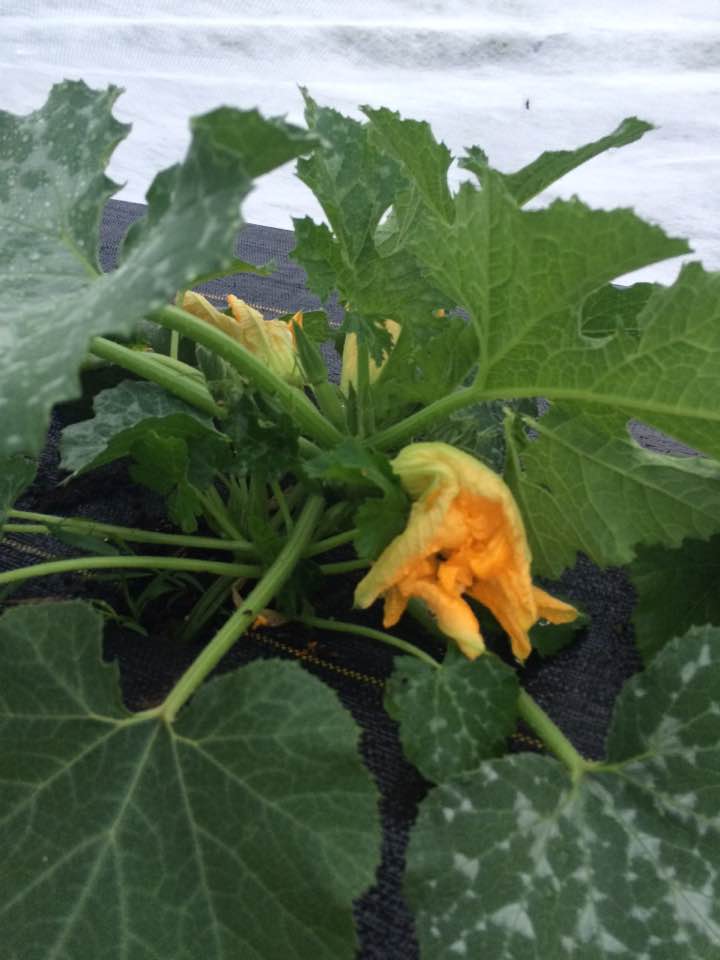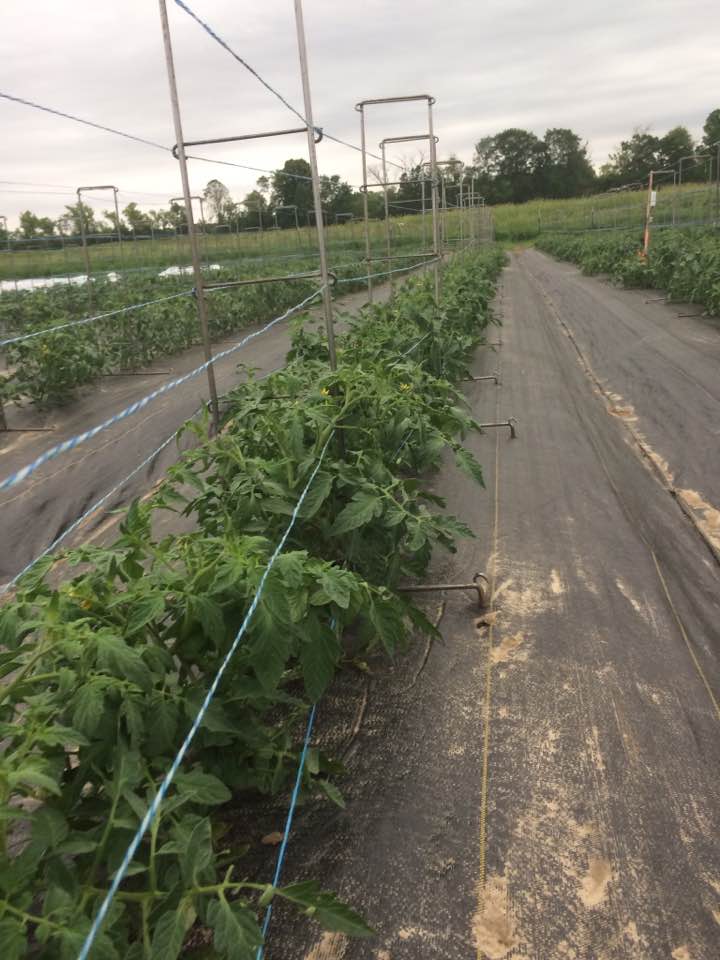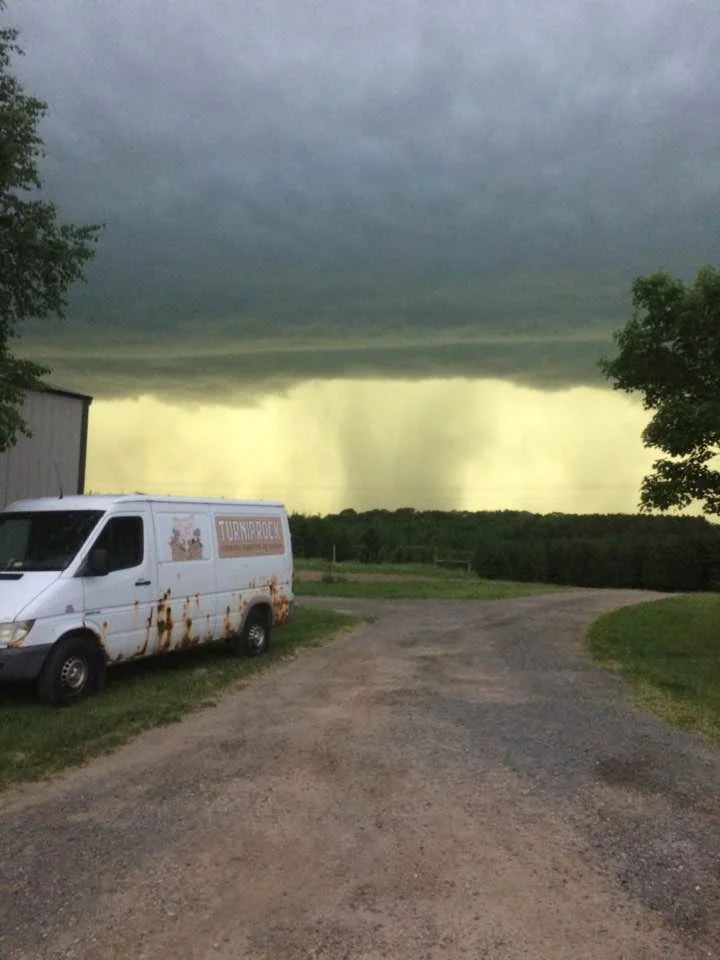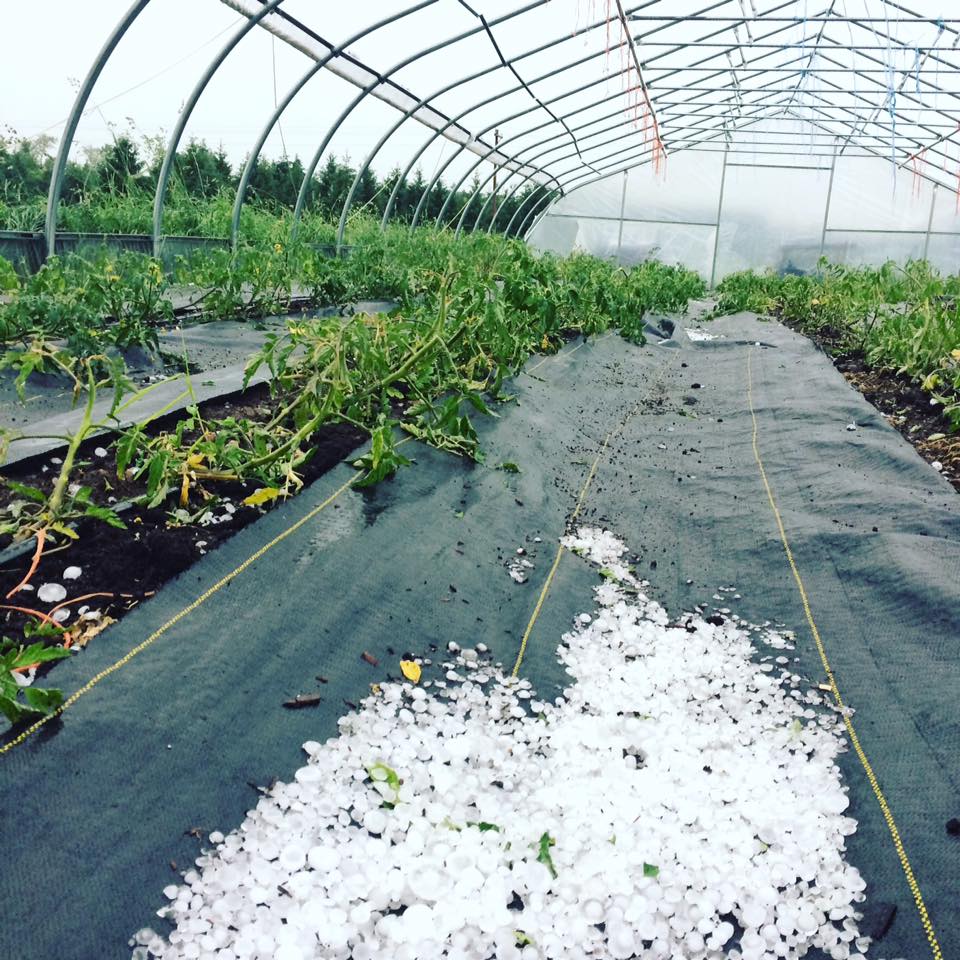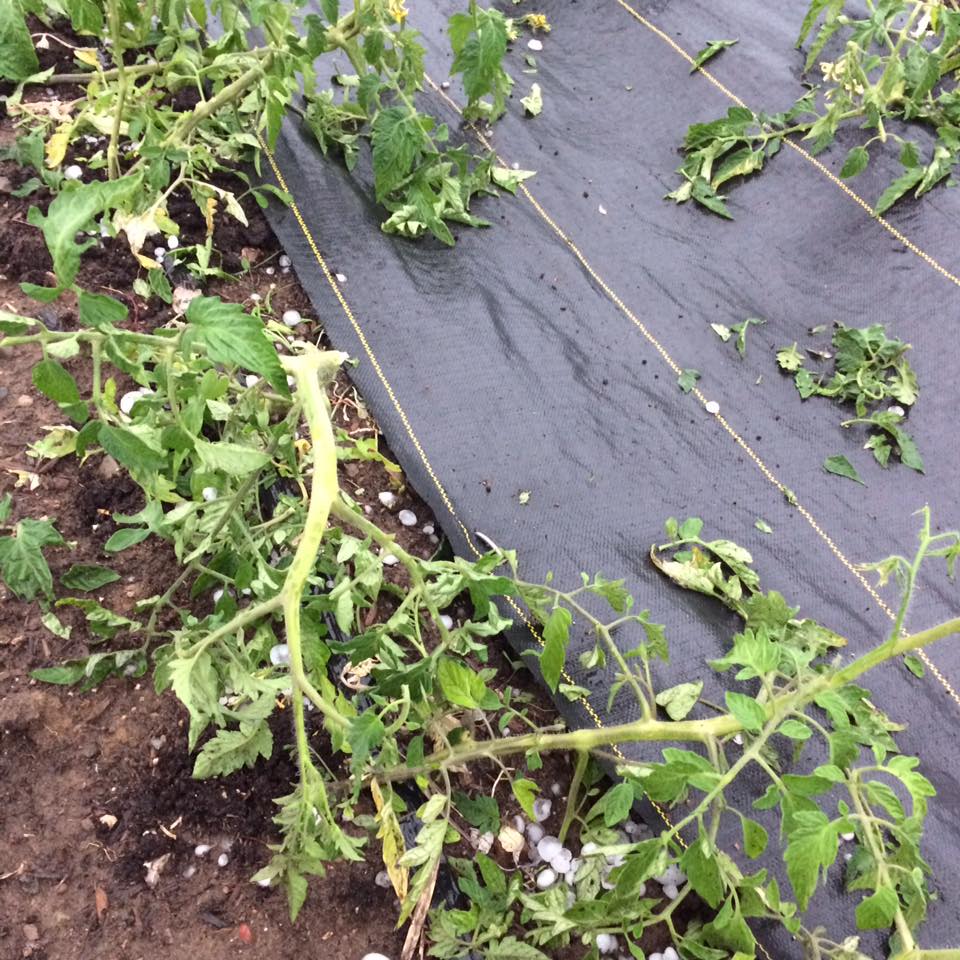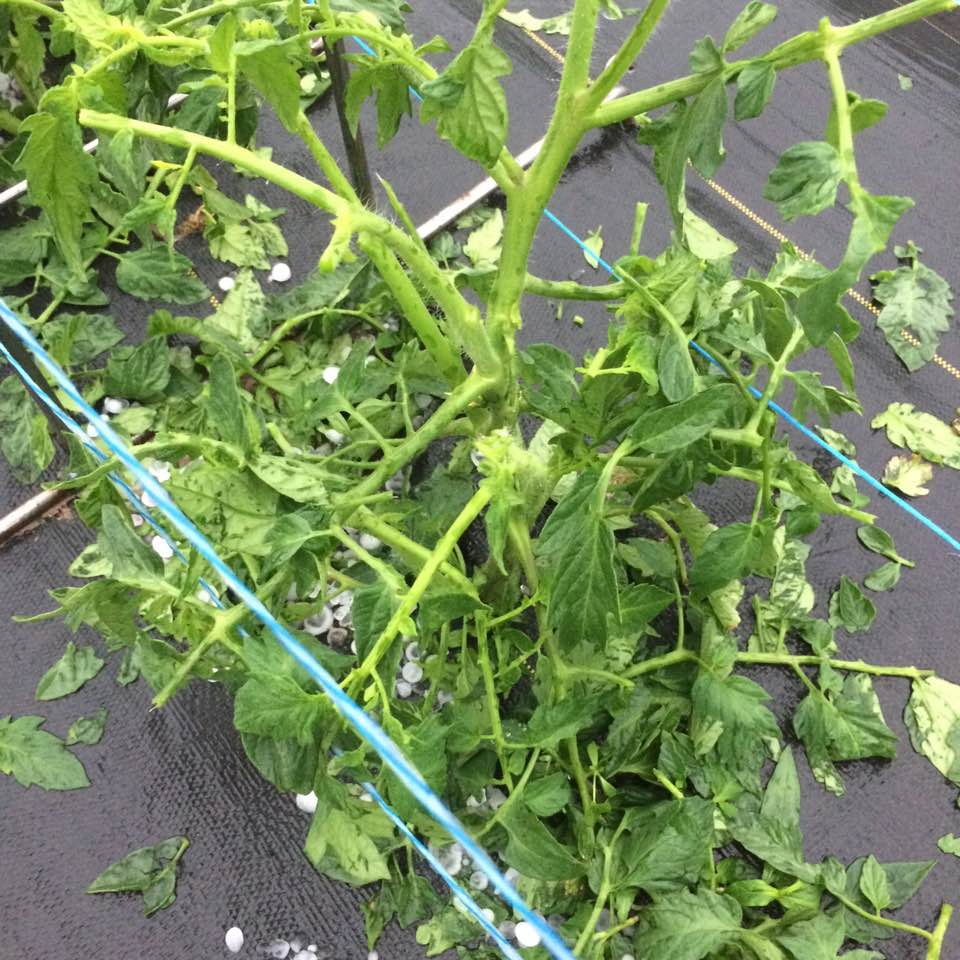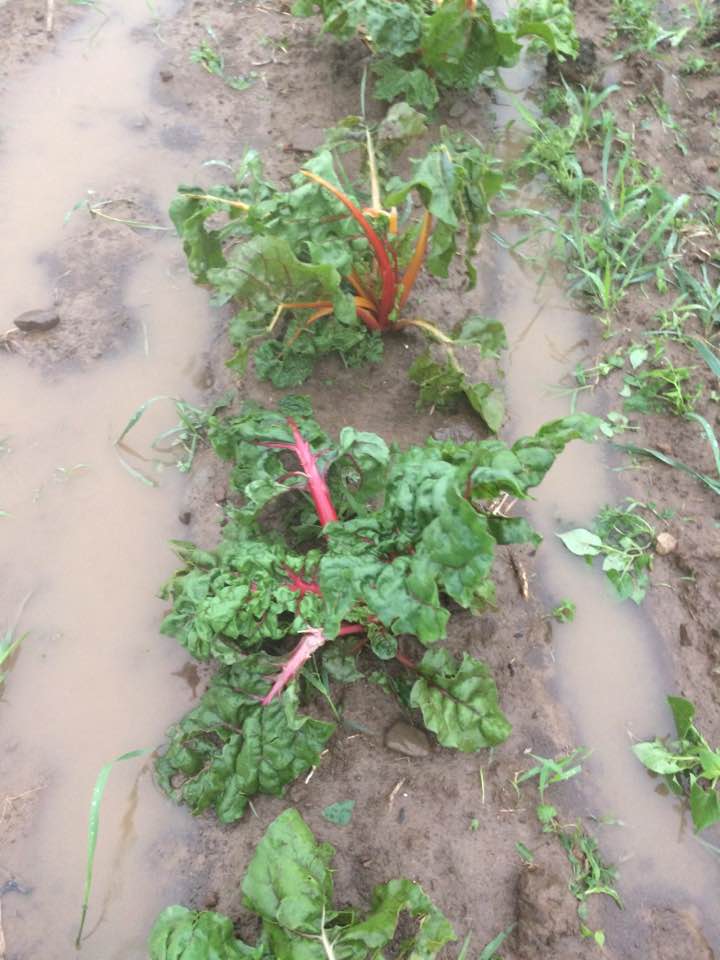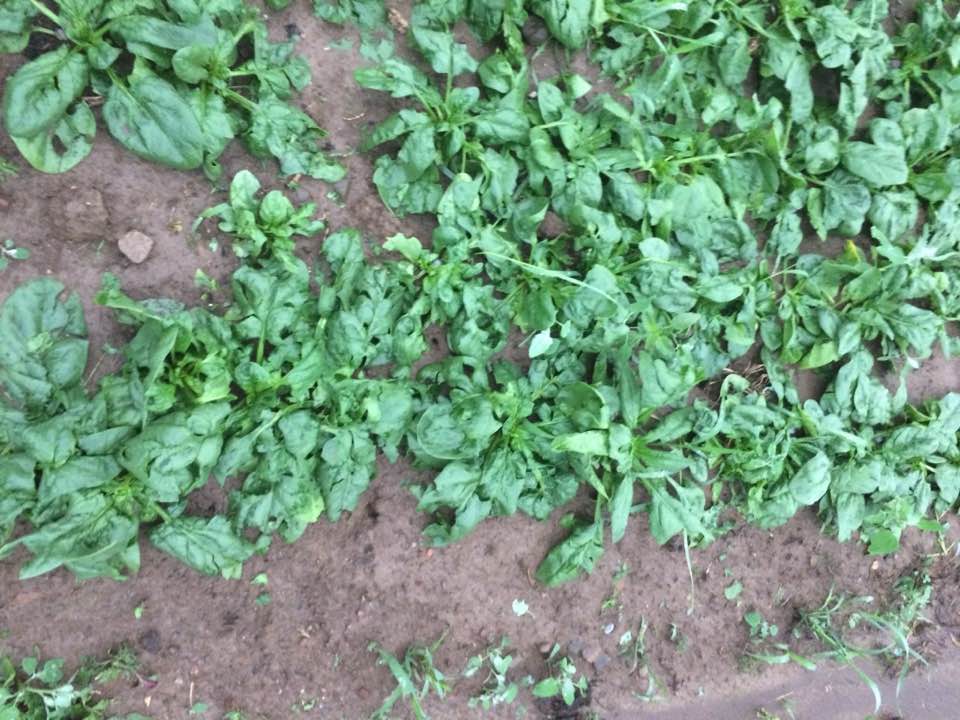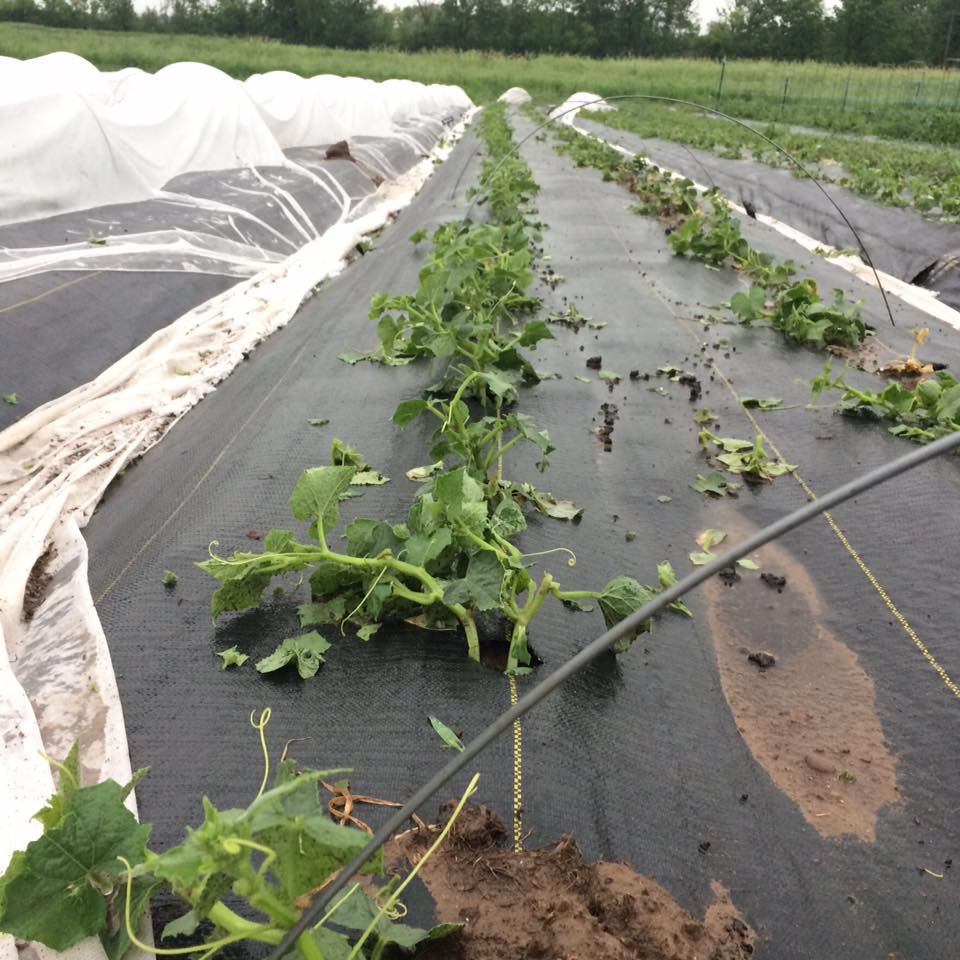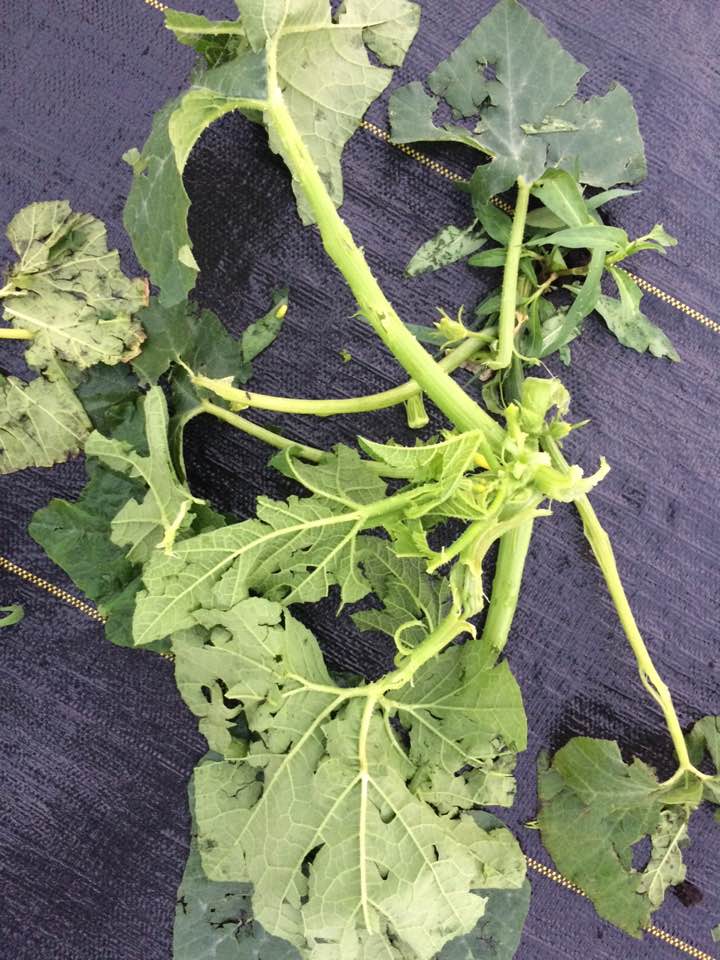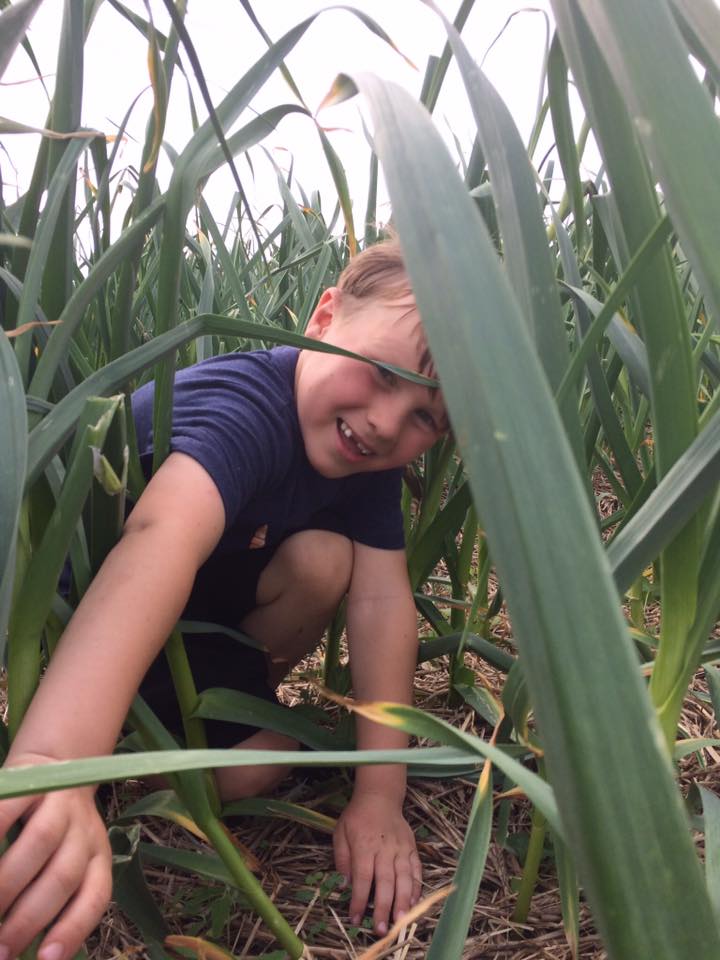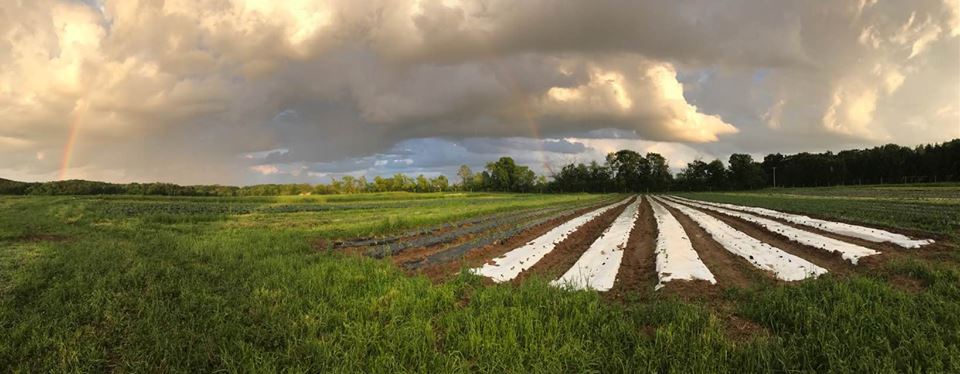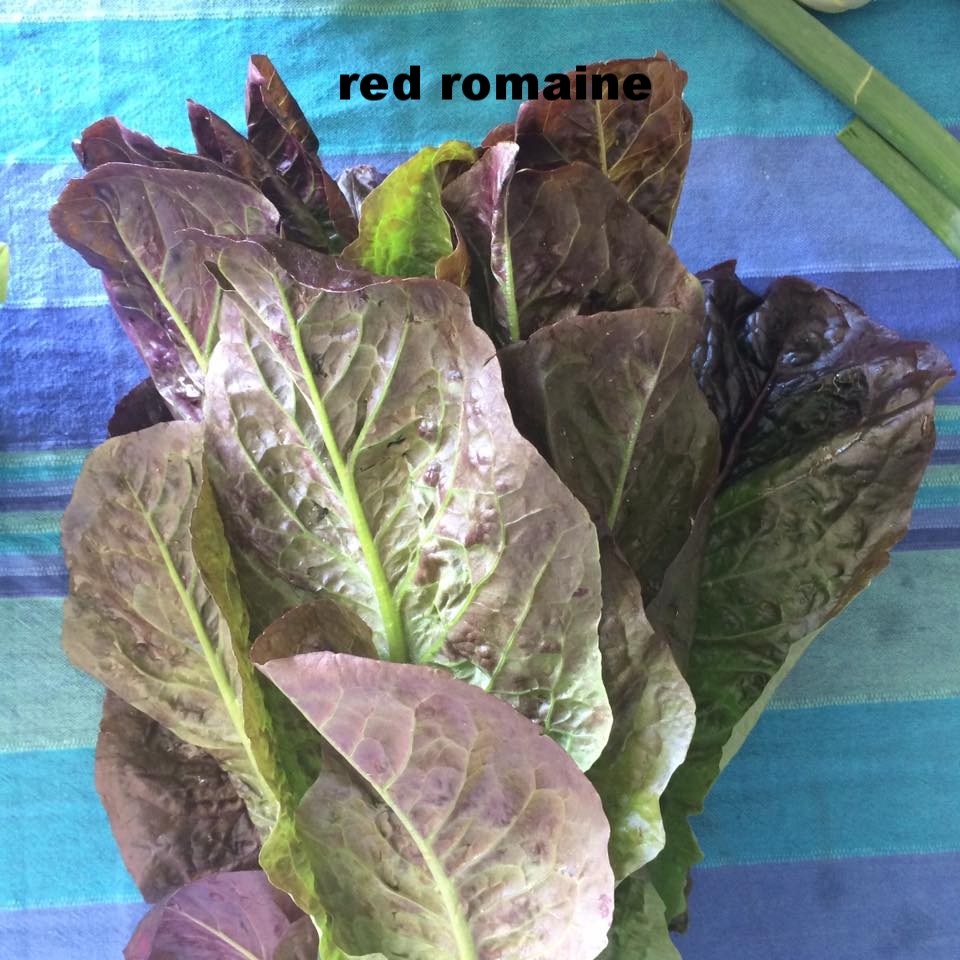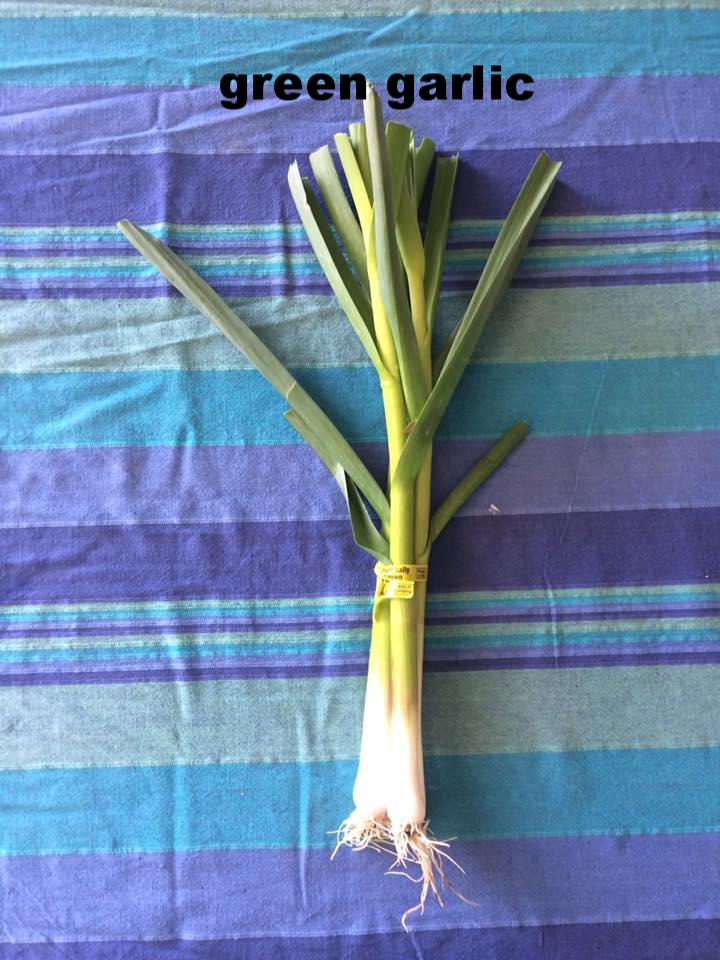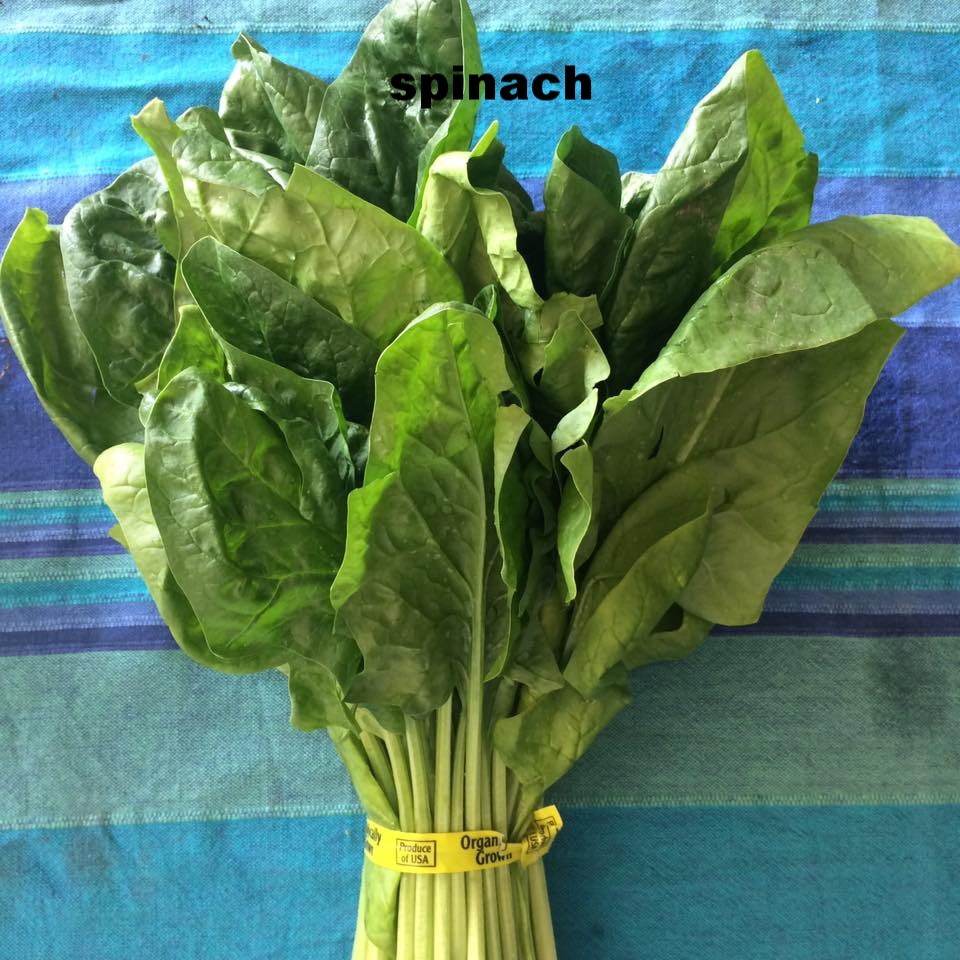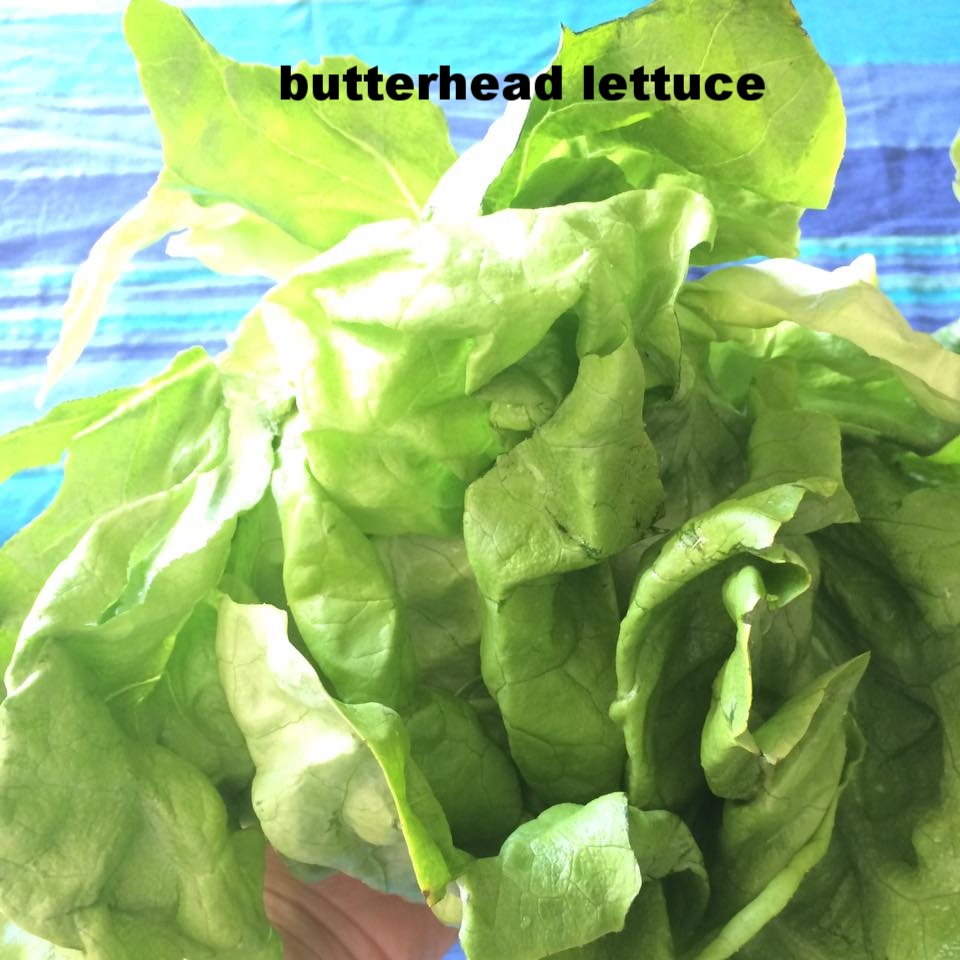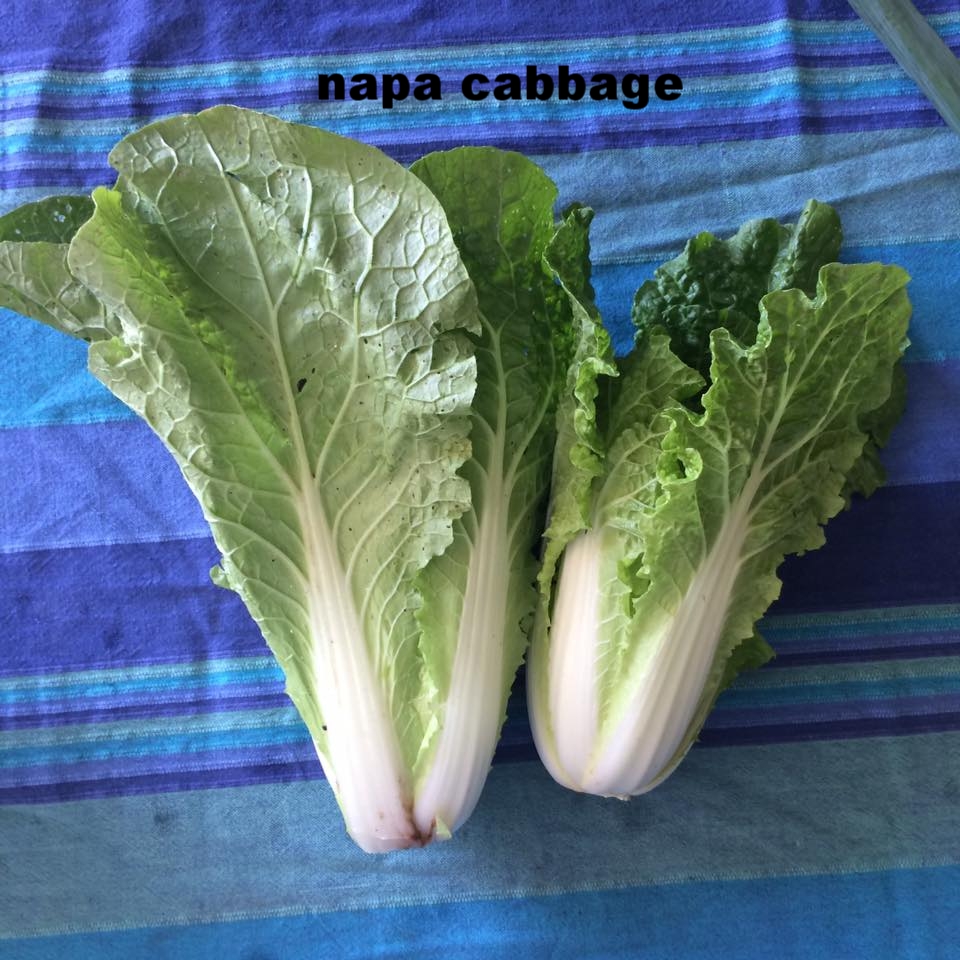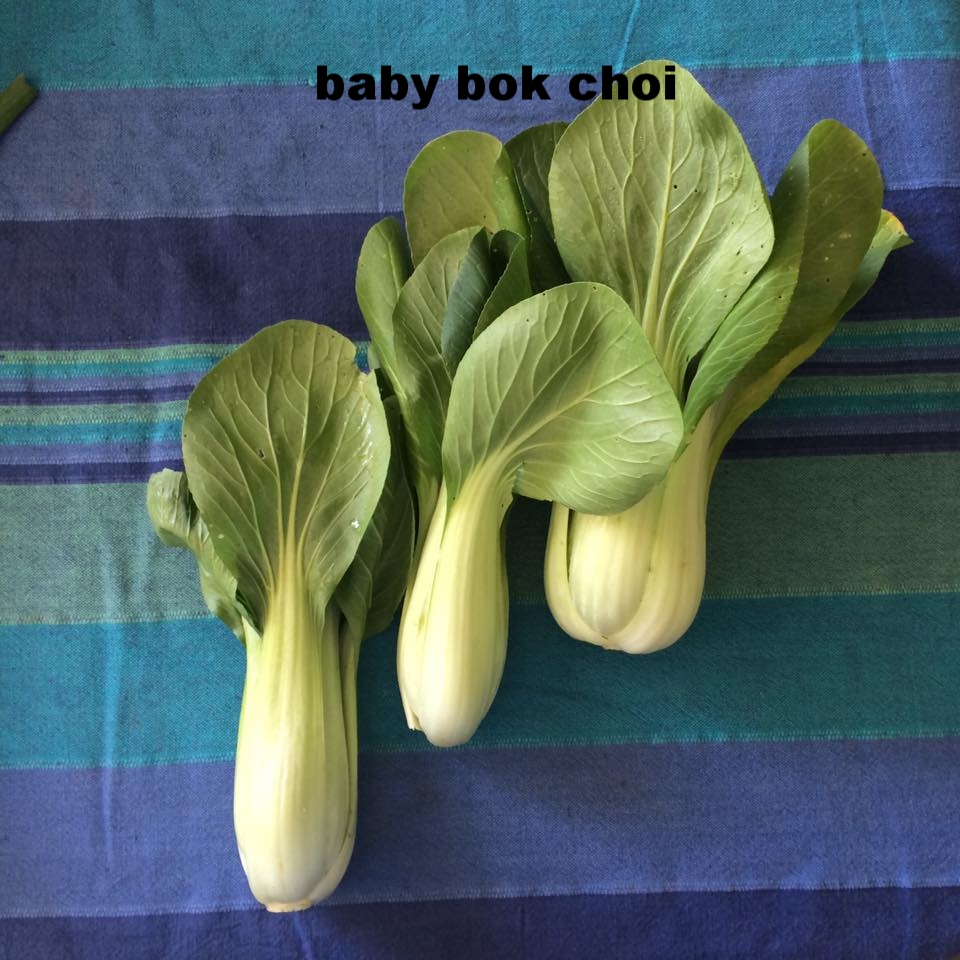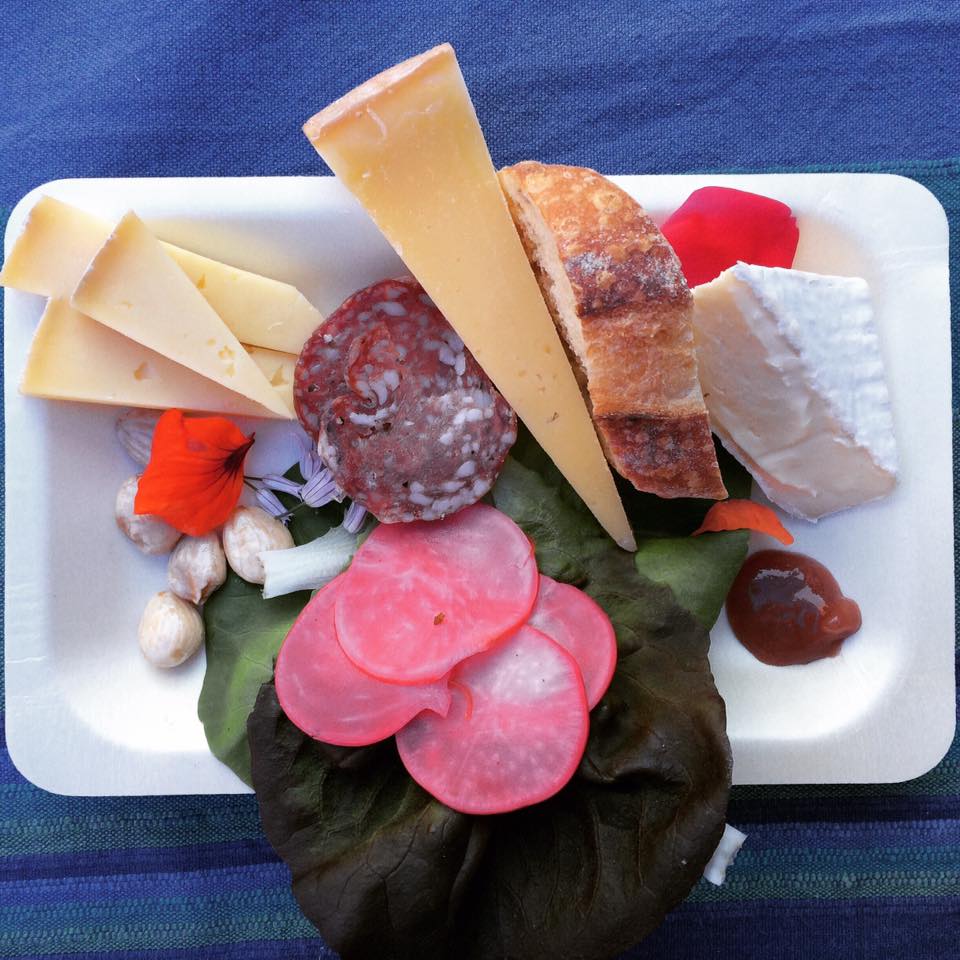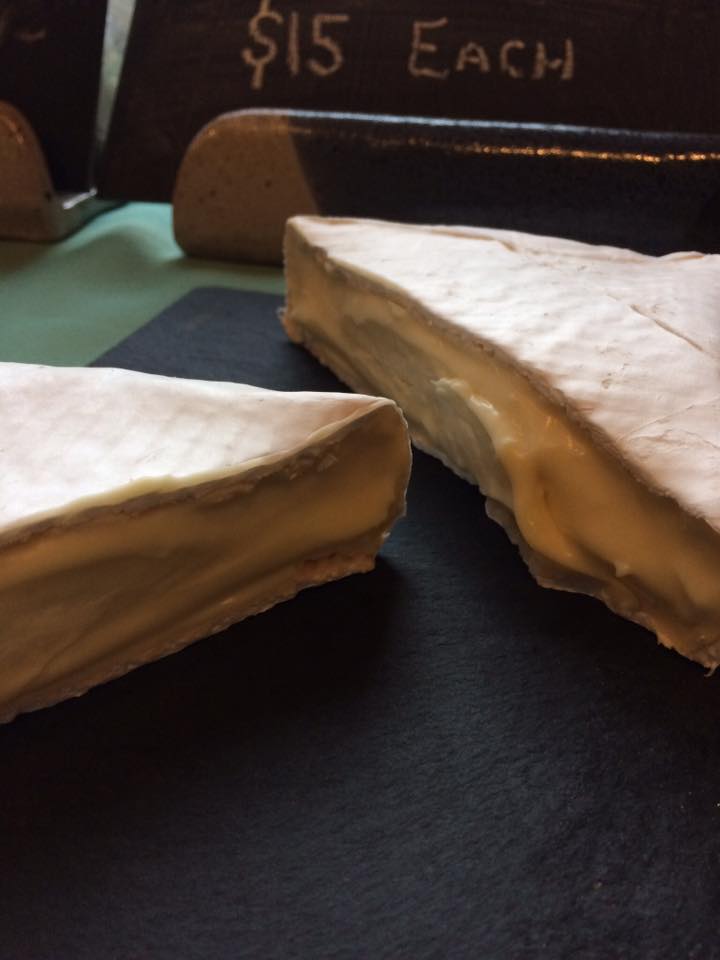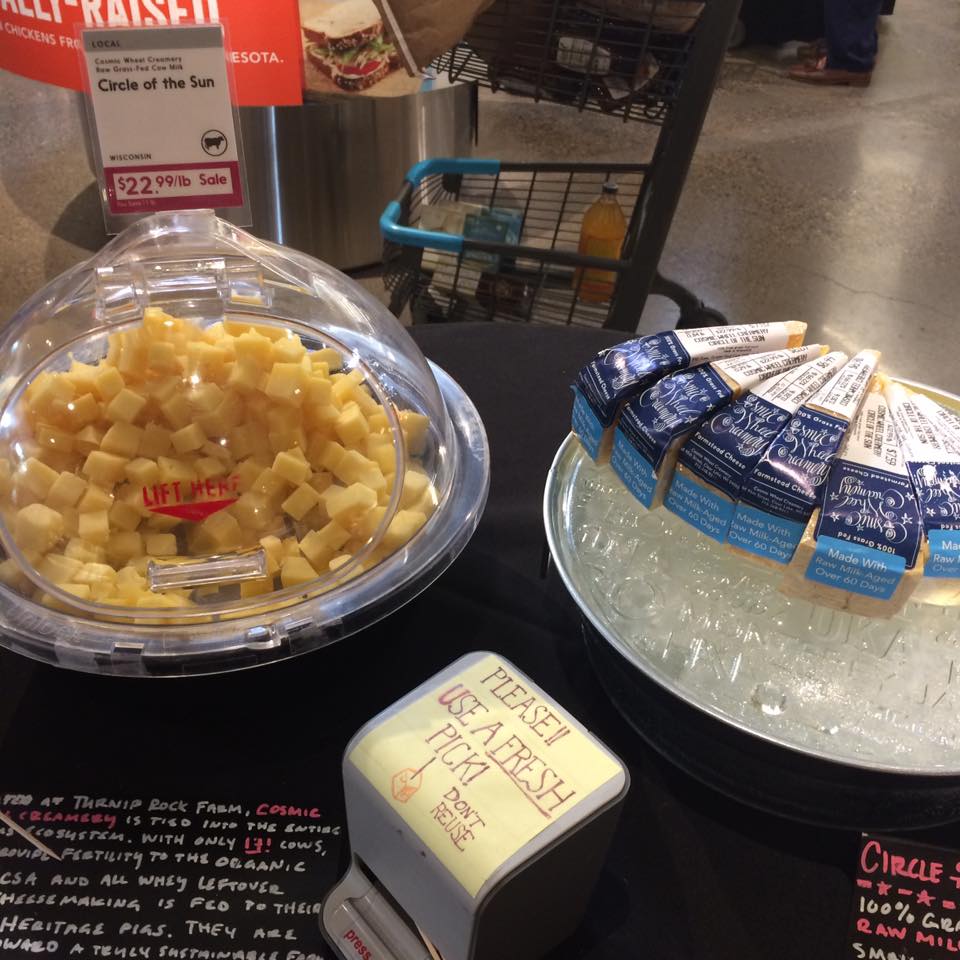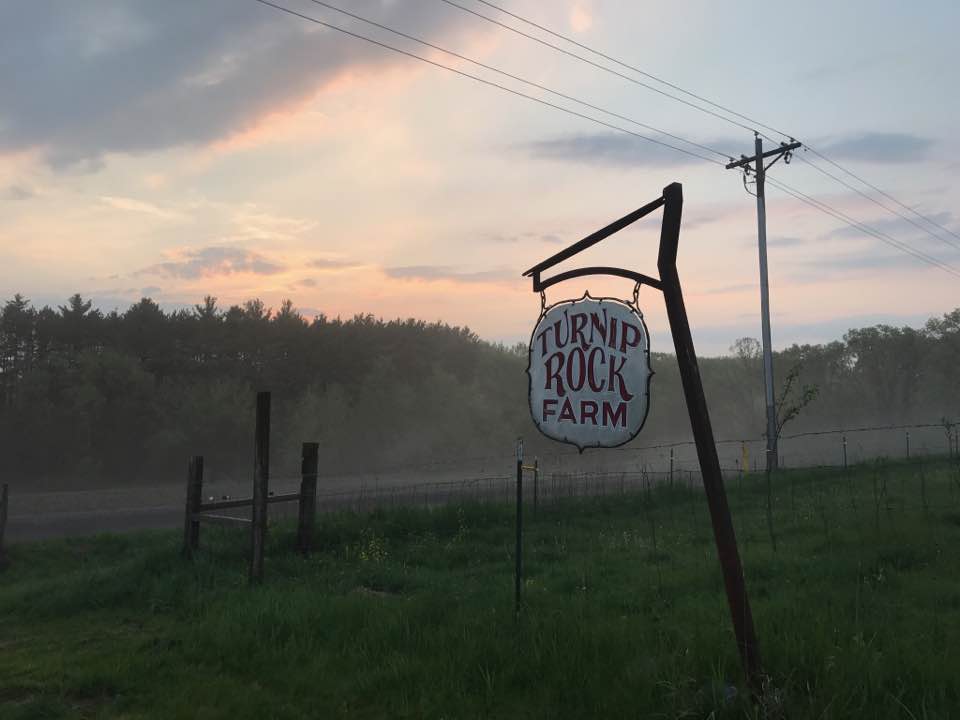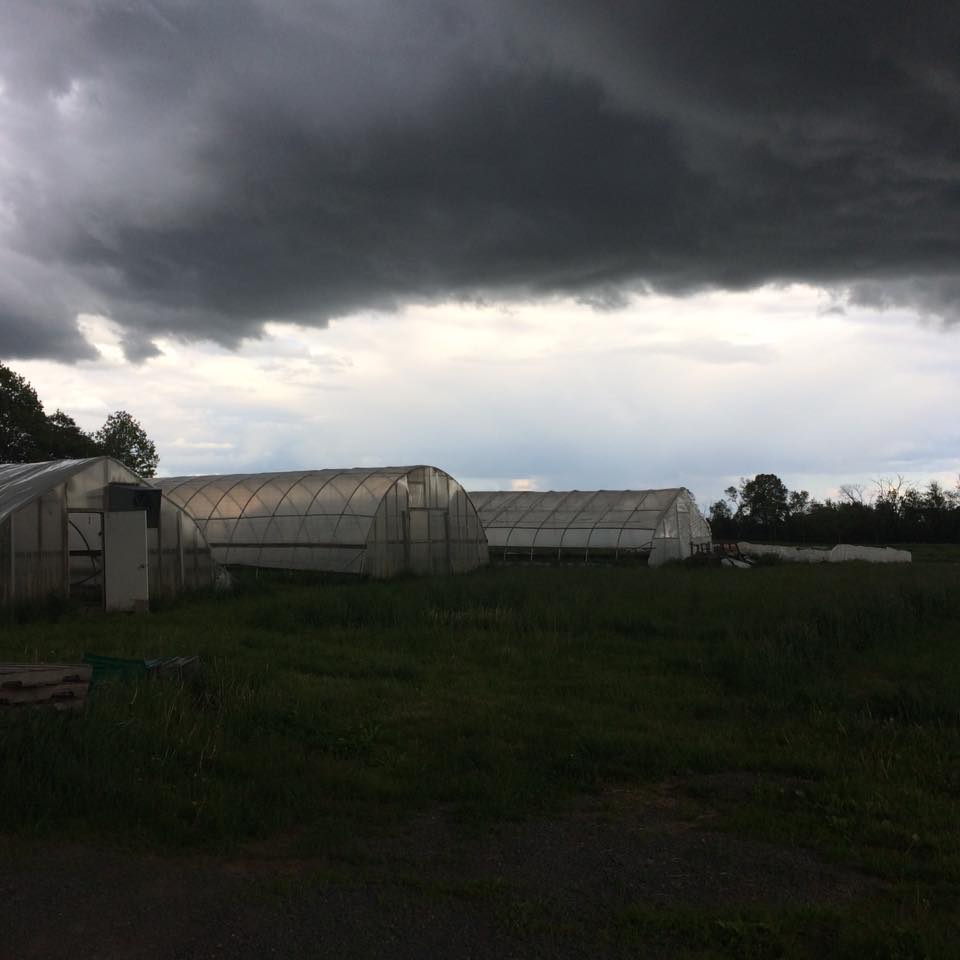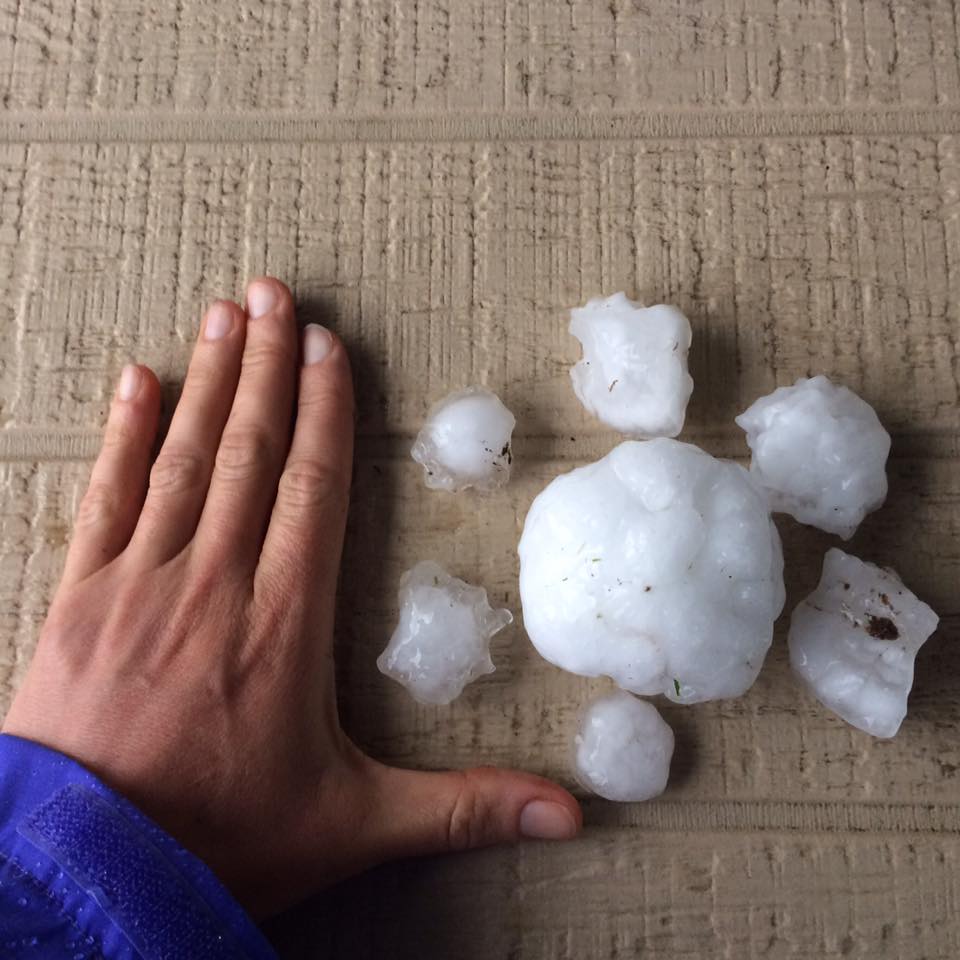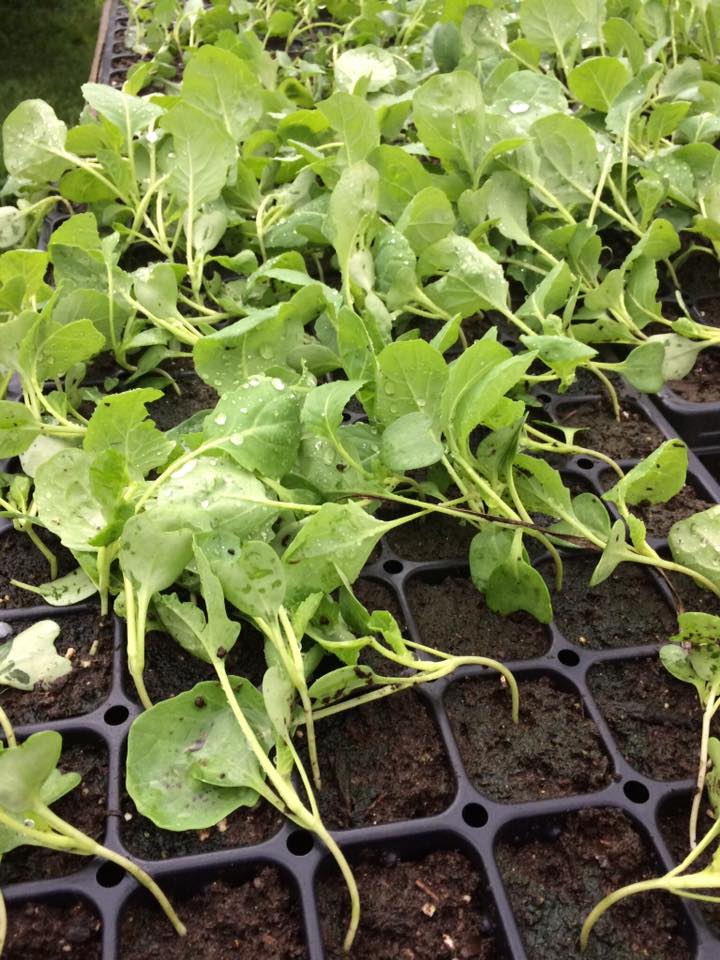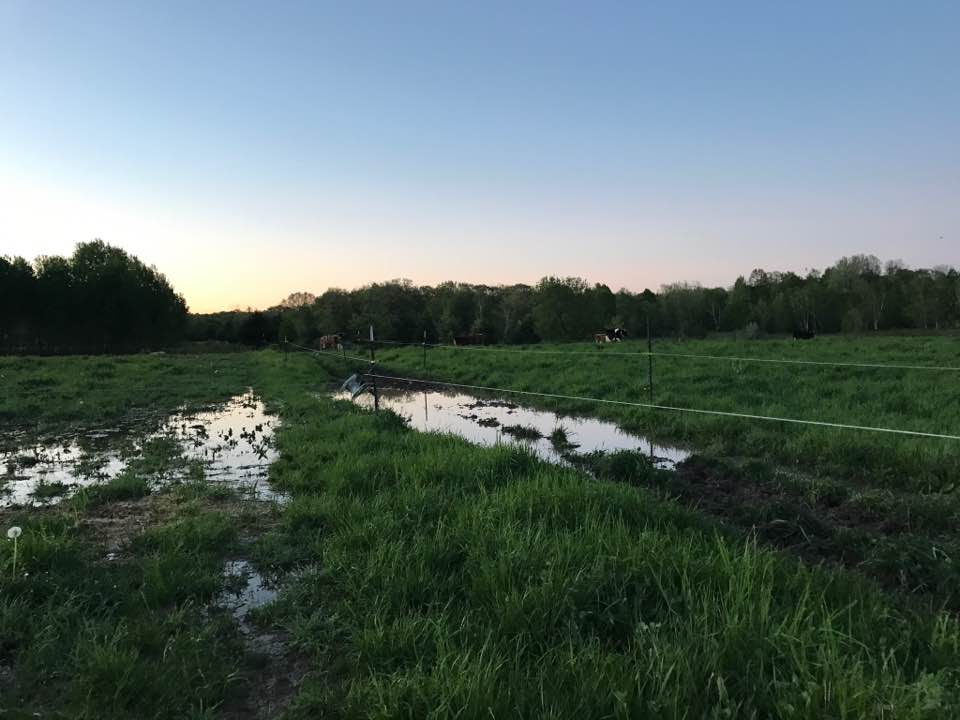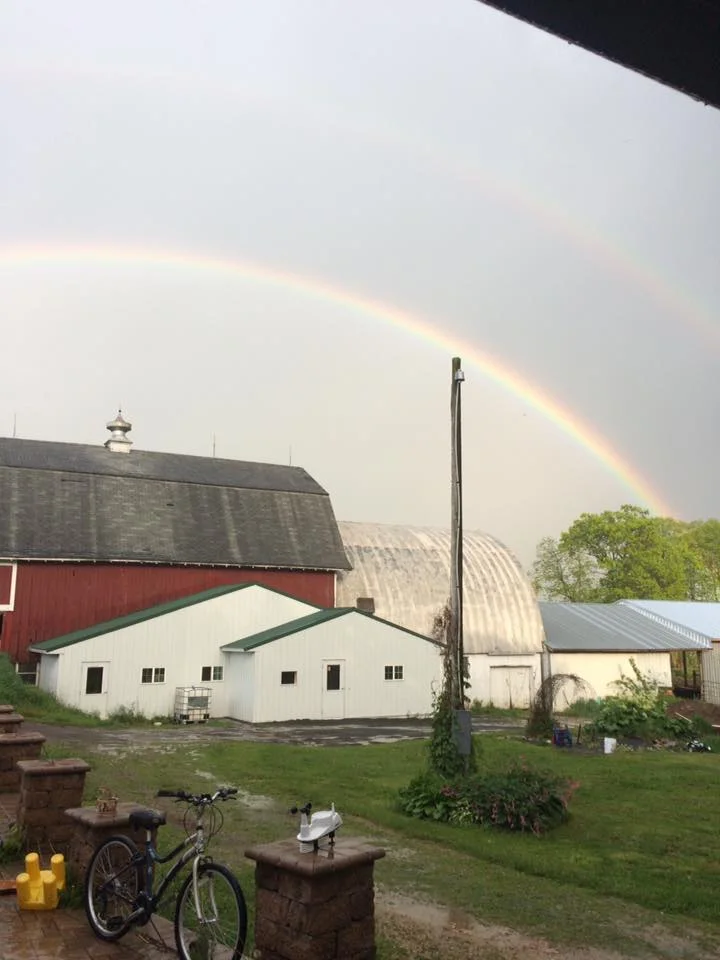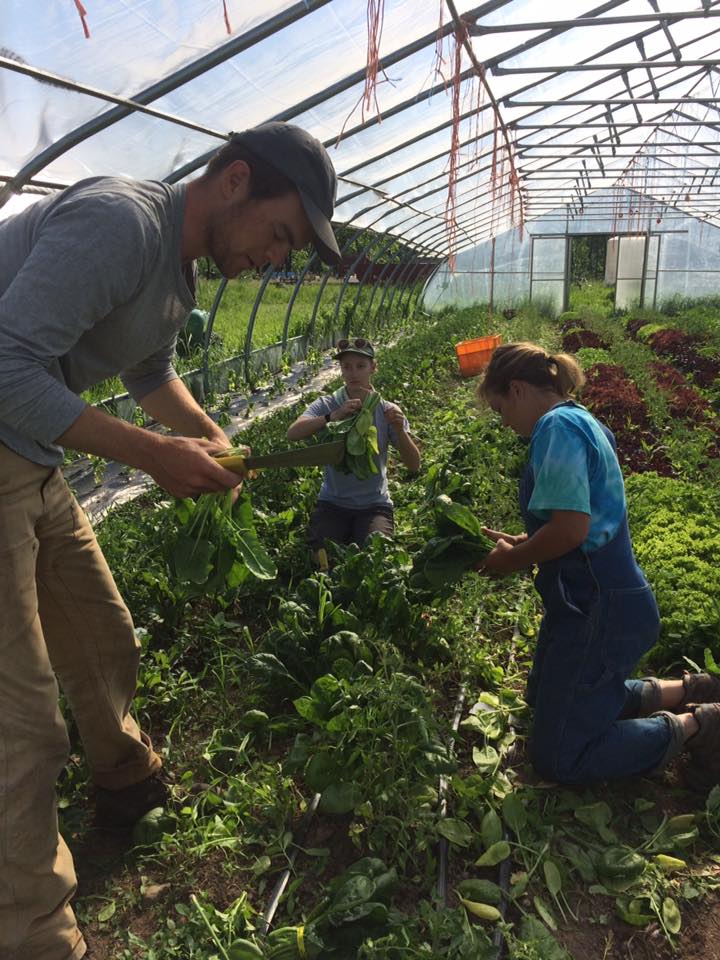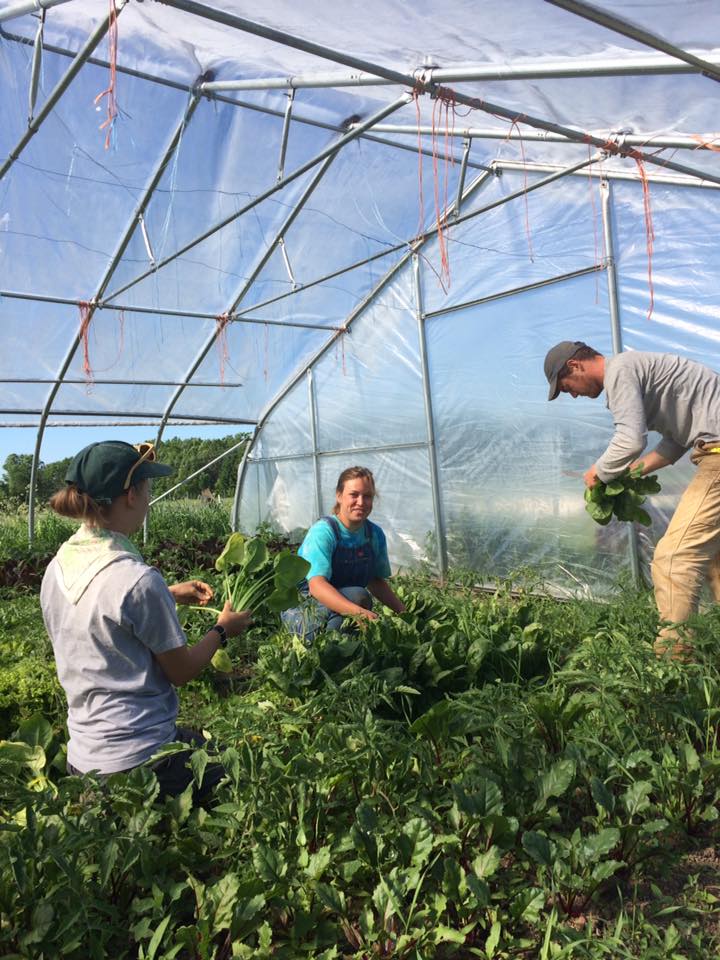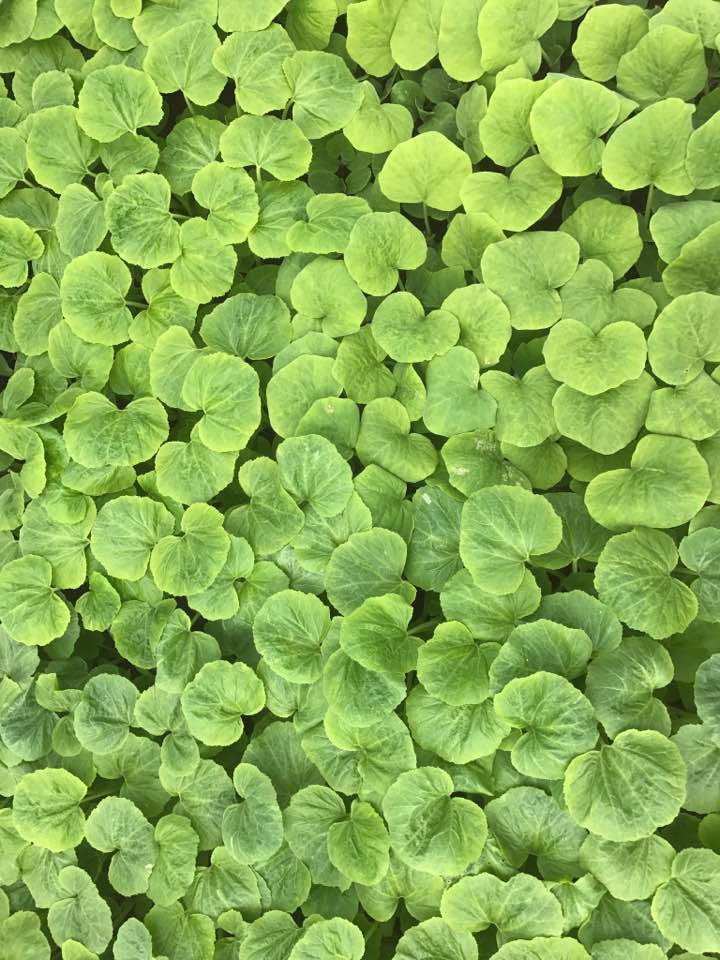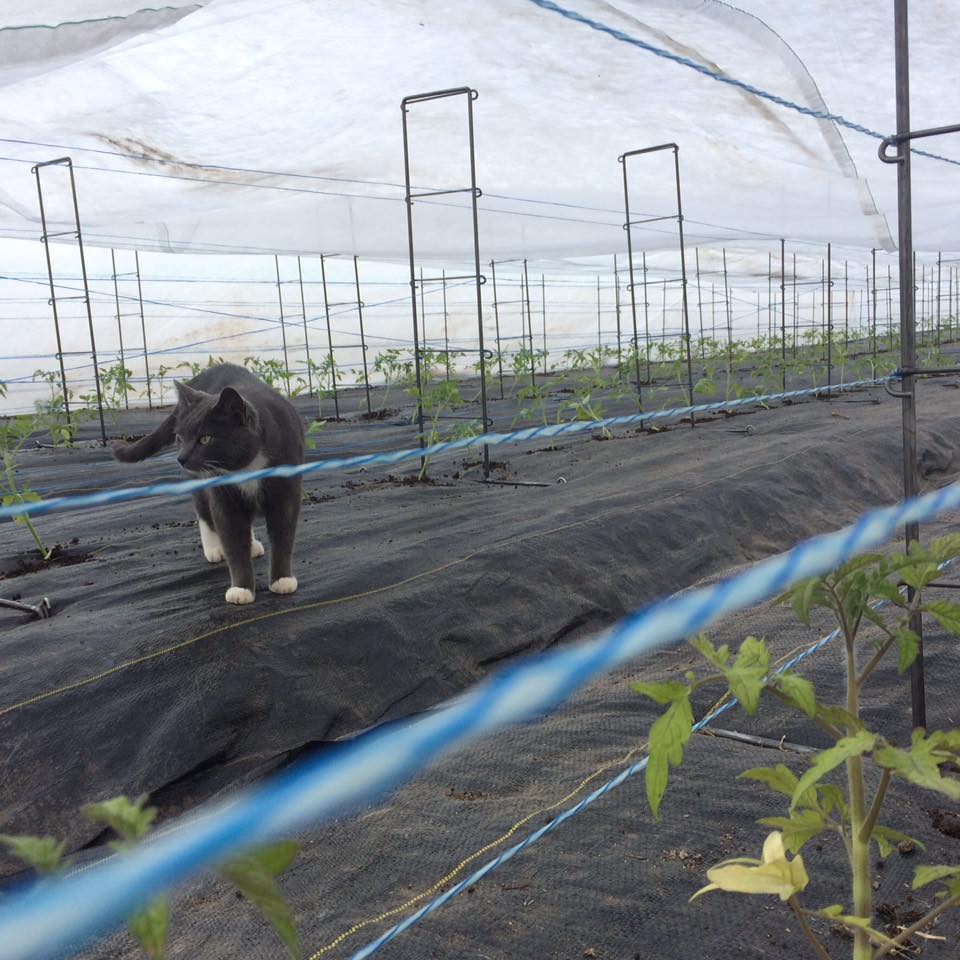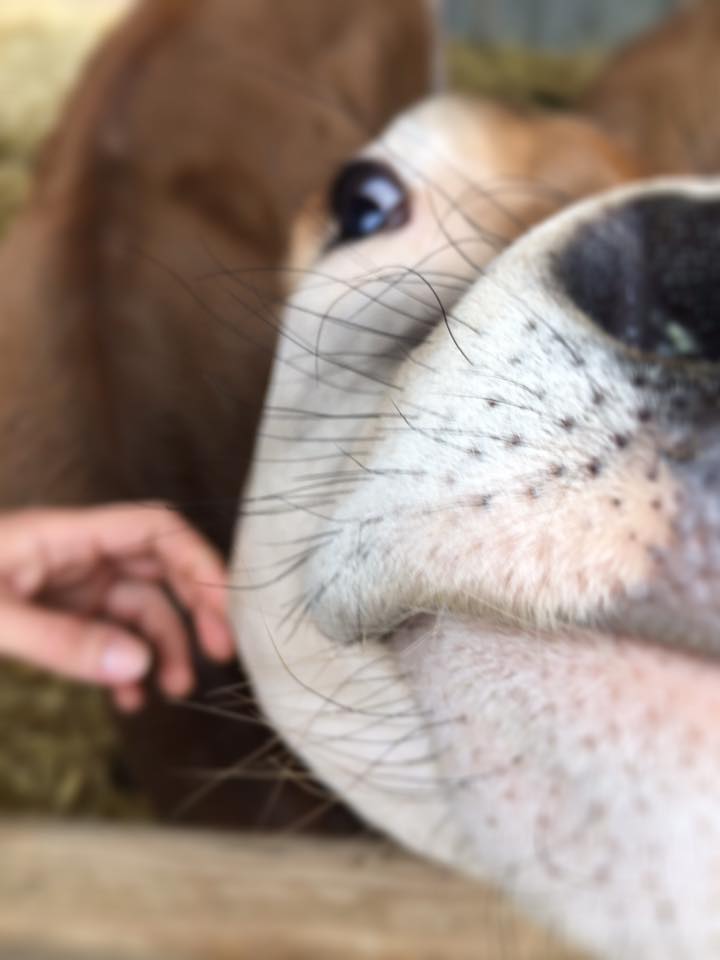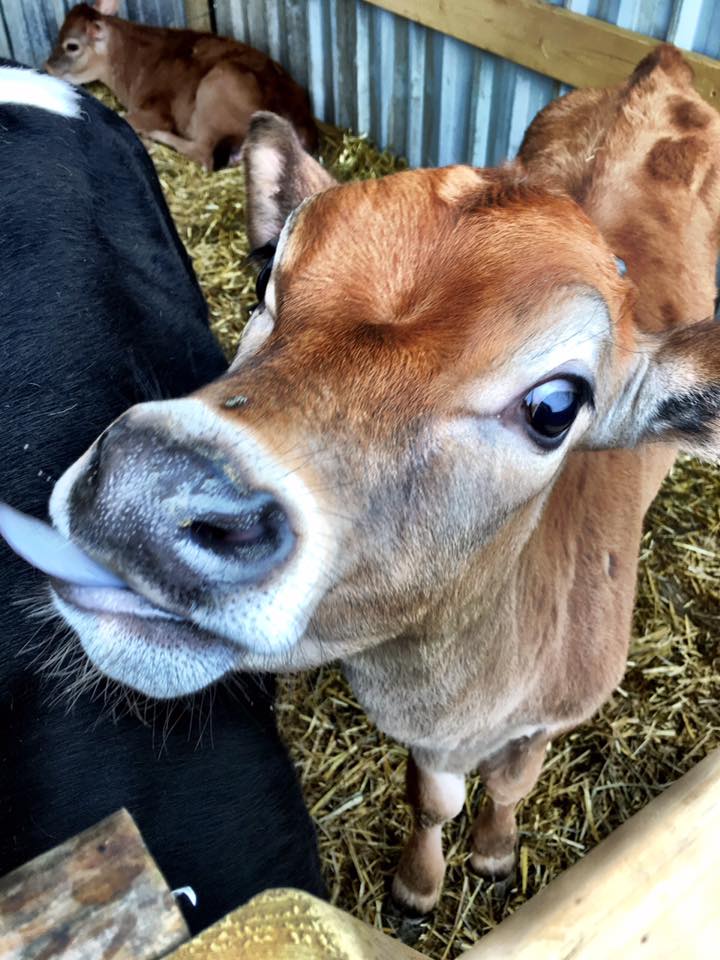What's in the box?
Green Romaine Lettuce
Scallions (green onions)
Salad Turnips (topped)
Salad Mix
Spinach
Chard, Kale, or Collards
Notes on the box.
We are seeing the effects of the hail and washout rain in this box. It's much lighter than we had planned and we had lower our quality standards a bit so that we could get this lettuce to you. Radish and Arugula were washed out, broccoli buttoned up early so there are no nice big heads, and of course hail damaged lettuces and greens. Due to hail damage on greens, rows that would have yielded 200-250 bunches of greens are now yielding just 50. The hail continues to be a thorn in our side. The next couple weeks might be a little touch and go as we wrap up the last of the spinach and some other spring hail damaged crops, and move more into some nice butter head lettuce, scapes, fennel, beets, carrots and summer squash. We picked just 20 lbs or so of squash this week, and some of the large shares saw that. Half of the squash got hail damage, but those plants seem to be bouncing back pretty well. We think that as the season goes on we will be able to make up the lost value in these early season boxes as long as the weather stays nice!
Store everything in the fridge. Lettuce and greens will keep better in a plastic bag in your crisper.
Cosmic Wheel Creamery cheese shares.
This week I sent two aged cheeses. They are the same recipe, but the MoonShadow is made when the cows are eating primarily hay early in the season and the MoonGlow is made when the cows are eating all green pasture. The MoonShadow is also aged longer than the MoonGlow. I sent these two together so that you can see what a difference the diet of the cows makes on the cheese. You can see that the hay makes for a more creamy white color while the grass is bright yellow. The flavors are different, too. I think the flavor of the grasses really comes through in the MoonGlow, especially when you taste it next to the MoonShadow. Difference in texture has a lot to do with the difference in age and that the MoonGlow was made into larger wheels. MoonGlow is a good melter if you plan on cooking with it. The MoonShadow is a bit more crumbly and is nice on a salad. Both are great for snacking and pair well with dried fruit, jams, or cured meat.
Recipes.
Every Salad Dressing Recipe you might want.
On the Farm.
We can't say enough how much we appreciated them emails and comments of support that come in after the bad news of the storms and the effect on the crops. When we start to feel down about the crops we have to remind ourselves that the weather is truly a factor that is out of our control. Your understanding on this helps so much.
I thought I'd spend this week telling you more about Turnip Rock Farm, the place where your food is coming from. It's attributes, it pluses and minuses, it's natural ability, and nature.
The farm is two square 40 acre parcels, just 4 miles south of Amery WI. East of HWY 46. Its on google maps if you want to look. The North 40 has no buildings and was recently purchased by Rama's Mom and Dad. It is 18 acres tillable land, and remaining 22 is in wooded low ground with some big boulders sprinkled across, all which drains into the willow river water shed through snake creek to our east. The South 40 (owned by us as of last year) harbors about 5 acres of wet land that adjoins to the south with a federal owned water foul reproduction site. Turnip Rock does not have any adjoining farm fields. That's nice because there is little risk of chemical drift or other issues that can happen with conventional ag next to an Organic farm.
The soil type on our farm is a silt clay loam. Heavy. Some rocks (though nowhere near as many as our previous farm that gave us our name), and a clay/sand subsoil. We have gently rolling fields that don't drain in any one direction. It holds water and fertility.
The farm was homesteaded by best estimates around 1920 according to some found artifacts and previous owners we've talked to. It used to be 160 acre dairy at that time with cattle grazing the wood lots and cropping on the tillable. It remained a 20-30 cow dairy up until early 1980s, which is impressive if you think of all the technological advances made in agriculture during that 60 year period.
There was a local coo coo clock maker that lived here who also refurbished furniture. He passed away with a long waiting list of people who wanted to buy his clocks. And a few locals still remember or have that piece of furtinture he fixed up for them. His workshop was a well house first, and is now our cheese aging space.
When we moved here, the previous owners were renting out the farm fields to a larger crop farmer down the road and owned horses and a landscaping company. When we showed up the barn was full of domestic goods, the milk house (we tore down) was a dog kennel, and what had been pasture was now over grown with 15 plus years of agricultural neglect and succession forest. 4 years of breathing life back into a farm... finally starting to see it wake up again.
We have plans to add some fruit trees, continue to clear out invasive species in the wooded areas, and build the soil and graze animals.
We hope you can come out to see the farm during the Eat Local Coop Farm Tour on July 15th. If you can't make it then, we will be having more farm events later in the season!


